There are many reasons to visit Salzburg, Austria, and in this travel guide, I highlight what this city is about beyond its well-known parts and cliches detailed on the things to do in Salzburg lists, and beyond only Mozart and the Sound of Music. After multiple visits, I aim to show you how not all Austrian cities are the same and how they are easily accessible so that you can see different sides of the country, even in a short time.
Let’s pretend all of Austria’s major cities are siblings. Vienna would be the classical one with a hidden, gritty second personality. Innsbruck would be sporty, and Graz would have a Mediterranean flair. Salzburg? She would be exquisitely beautiful and musically gifted. Everyone wants to see Salzburg.
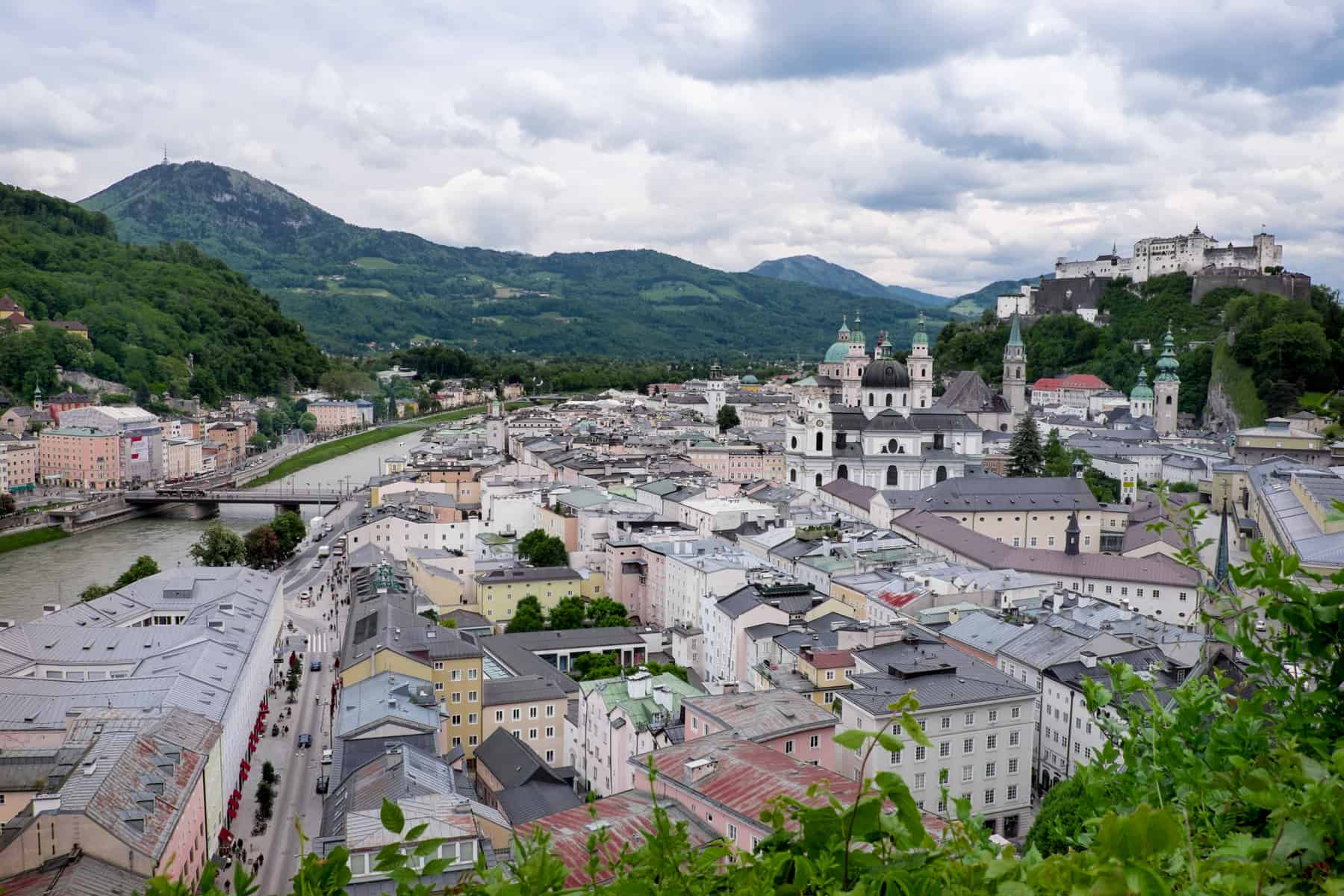
The Reason to Visit Salzburg, Austria
There’s more to Austria’s fourth-largest city than Mozart and the Sound of Music, of course, but the city is first and foremost a musical metropolis, even if this is not your sole purpose for visiting.
Salzburg’s streets are filled with buskers, opera singers and all manner of harmonic performers, continuing to serve with melodies a city that bore one of the greatest composers of all time. Annually the city hosts over 4,000 cultural events, including the internationally renowned Salzburg Festival. In-between, die-hard fans of the Sound of Music seek out the film’s famous film scenes, just as I did, and winter in Salzburg sees people come to visit the origins of the Silent Night Christmas Carol.
It’s no wonder Salzburg takes the tagline “Stage of the World”. That’s a lot of performance to pack into a compact city.
Yet, Salzburg is also a great place to wander and absorb the history that marks it out from other Austrian cities etched with typical Habsburg style and their distinct atmosphere. Salzburg is timeless while having carved out a youthful vibrancy; distinctly famous without being disgustingly overcrowded and charming in a way that you always hear about, but which you only connect with once you are there.
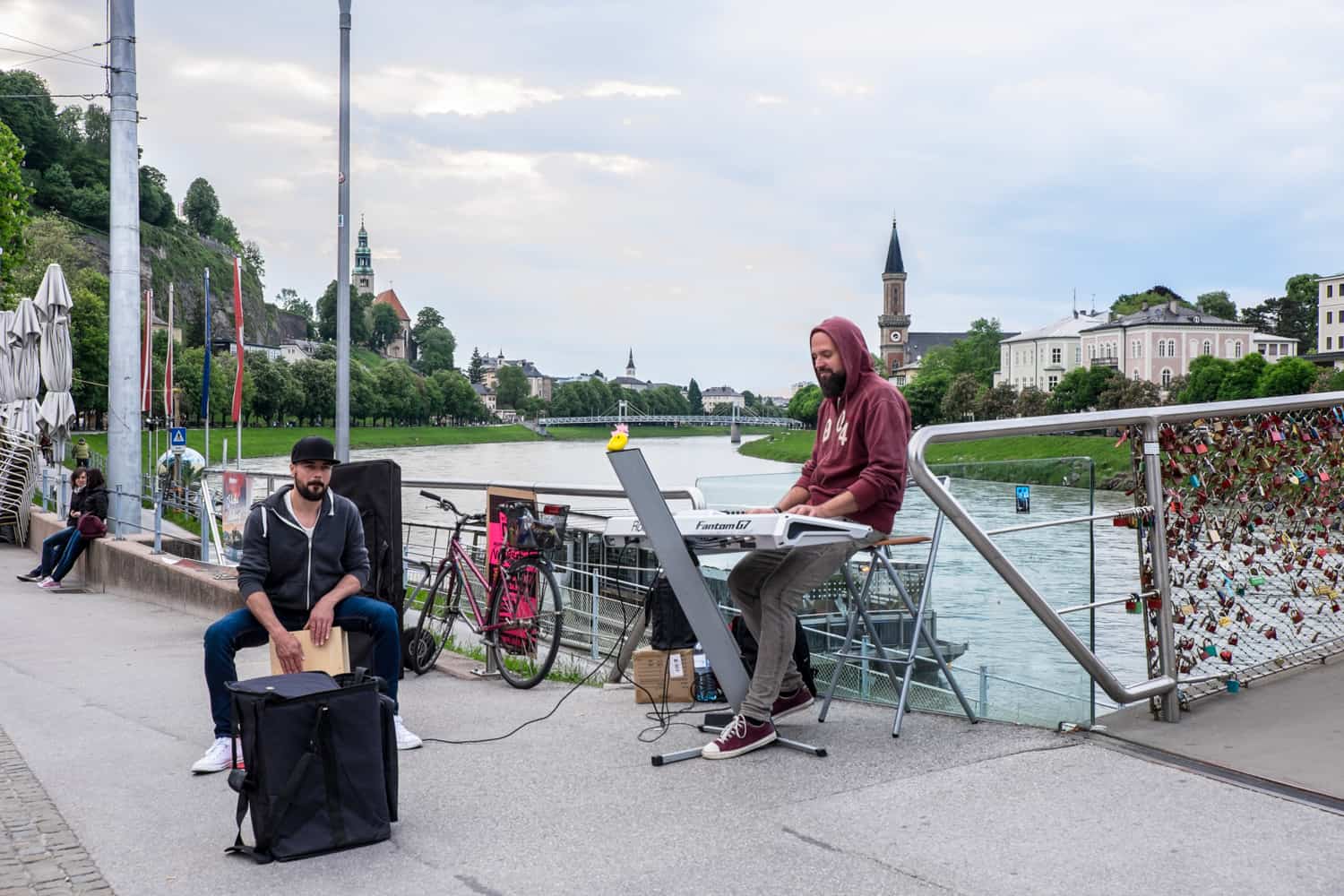
Salzburg – always the city of music on every corner.
Things to Do in Salzburg Beyond Musical Fame
Visit the Historic Palace of Schloss Leopoldskron
My journey began in the Schloss Leopoldskron, the historic palace 20-minutes from the city centre. The epitome of majestic Salzburg, this landmark building from 1736 boasts a shimmering blue lake (of Sound of Music fame), manicured gardens and a mountainous backdrop. In 1918 it was taken over by the famous theatre director and founder of the Salzburg Festival, Max Reinhardt who renovated to how it stands today with stunningly decorated rooms and a grand library – all of which you have free reign to wander.
Once the gathering place of writers, composers and other creatives, I couldn’t have asked for a better introduction to a city I had longed to visit for many years. After an emotional arrival (for reasons I cannot work out I just wanted to burst into tears the second I stood on the grounds here) and gorging on Palace interiors, the city was calling.
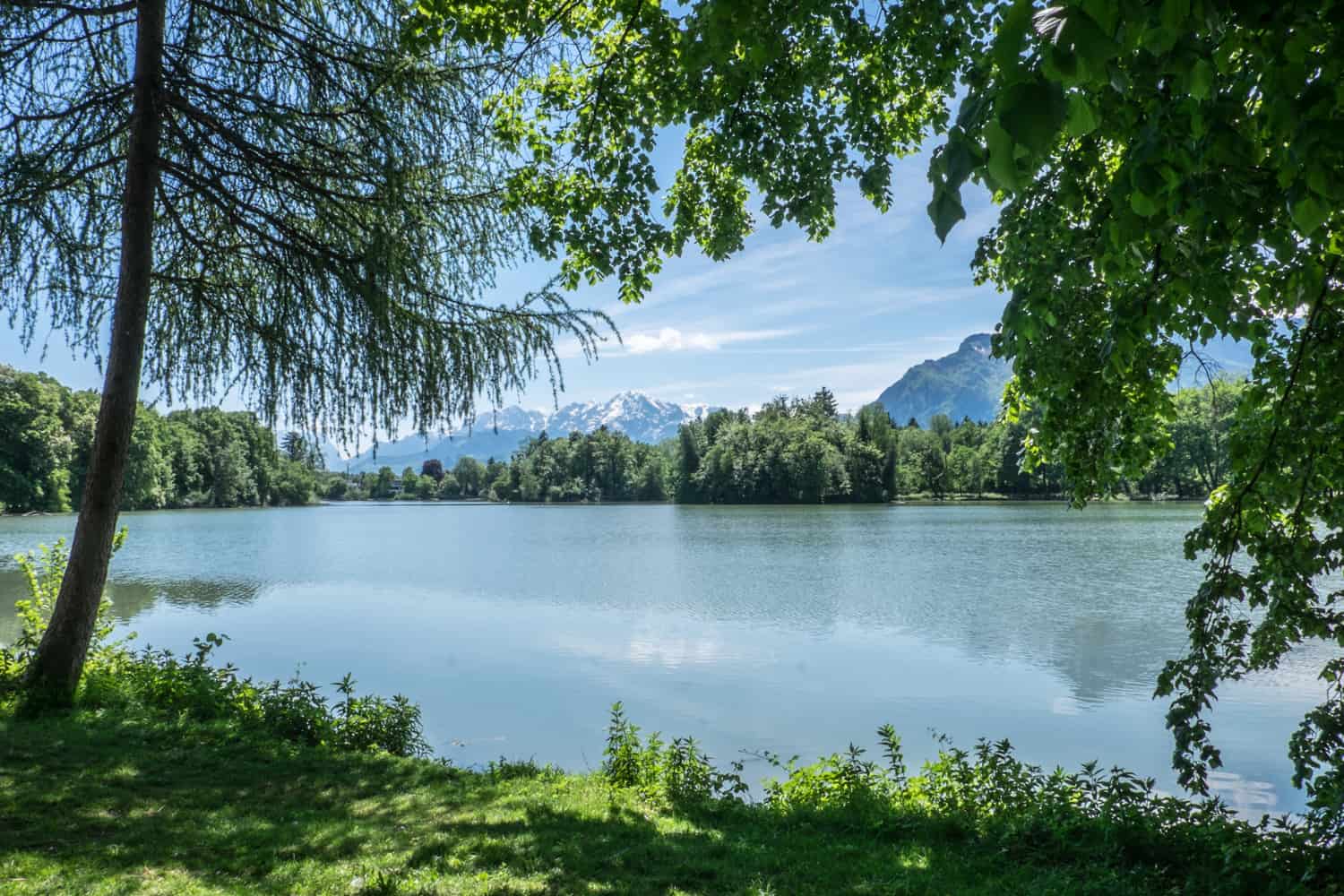
The Sound of Music Lake at Schloss Leopoldskron in Salzburg
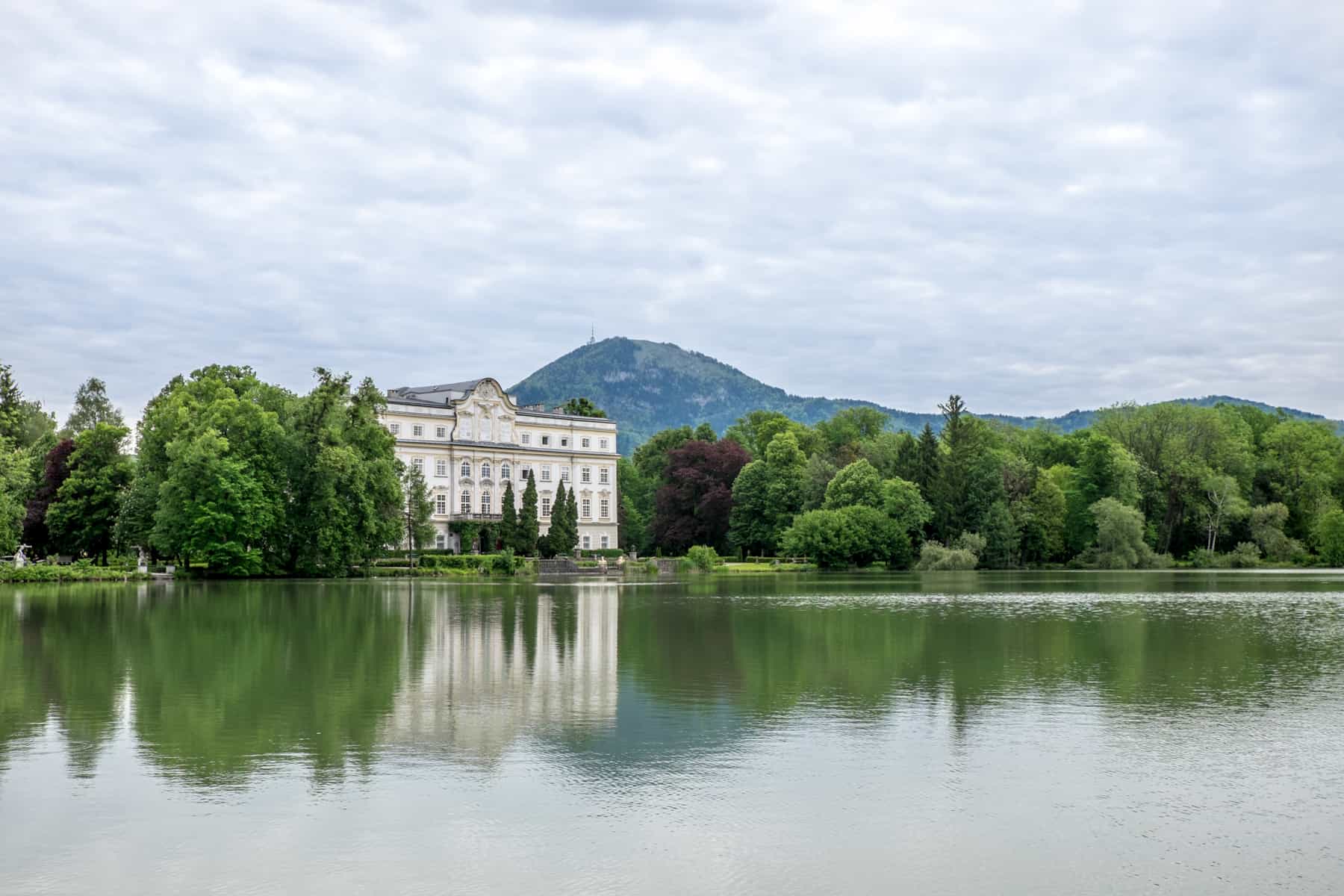
The beautiful Schloss Leopoldskron in Salzburg, seen from the other side of the lake pond.
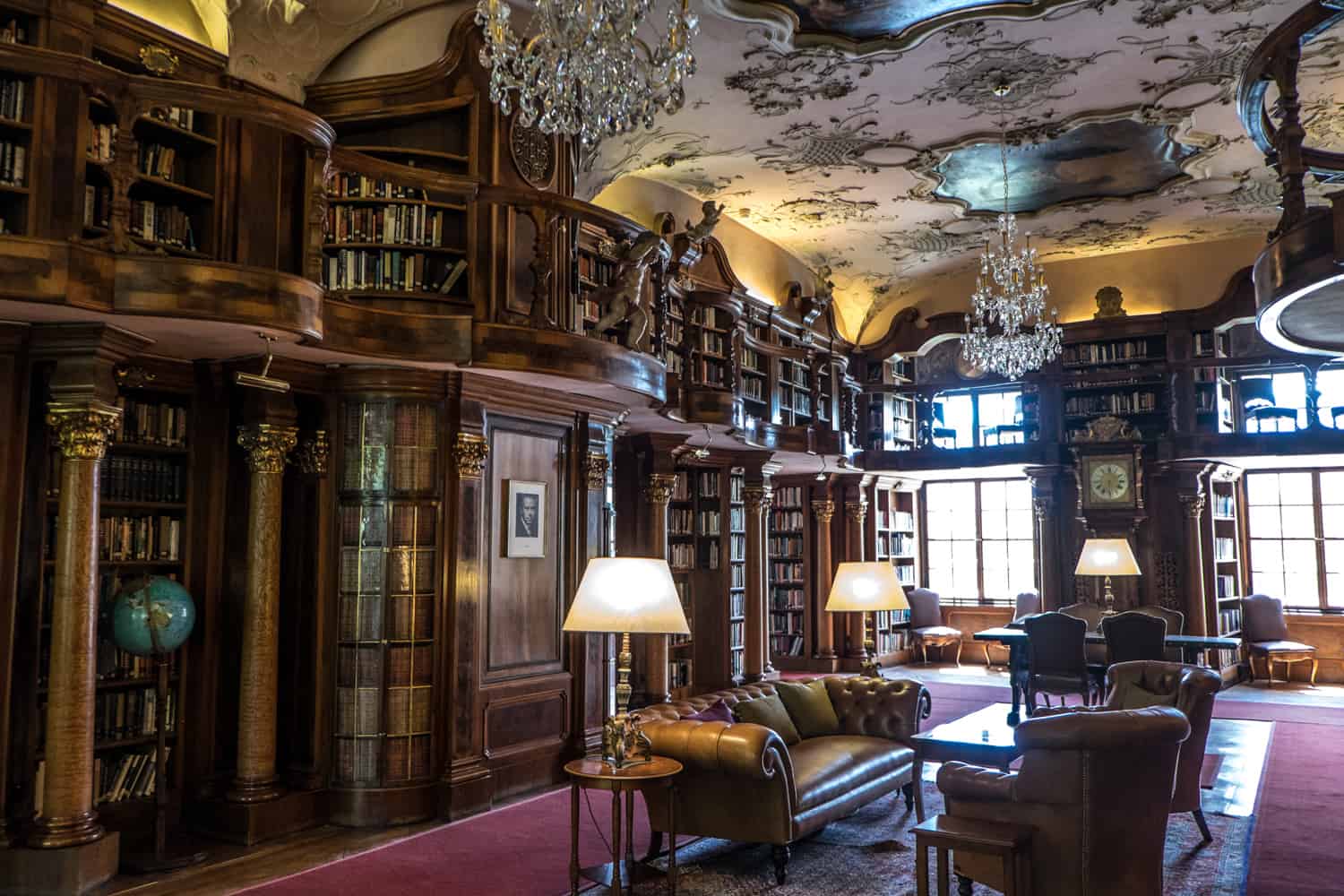
The library of Schloss Leopoldskron in Salzburg, Austria
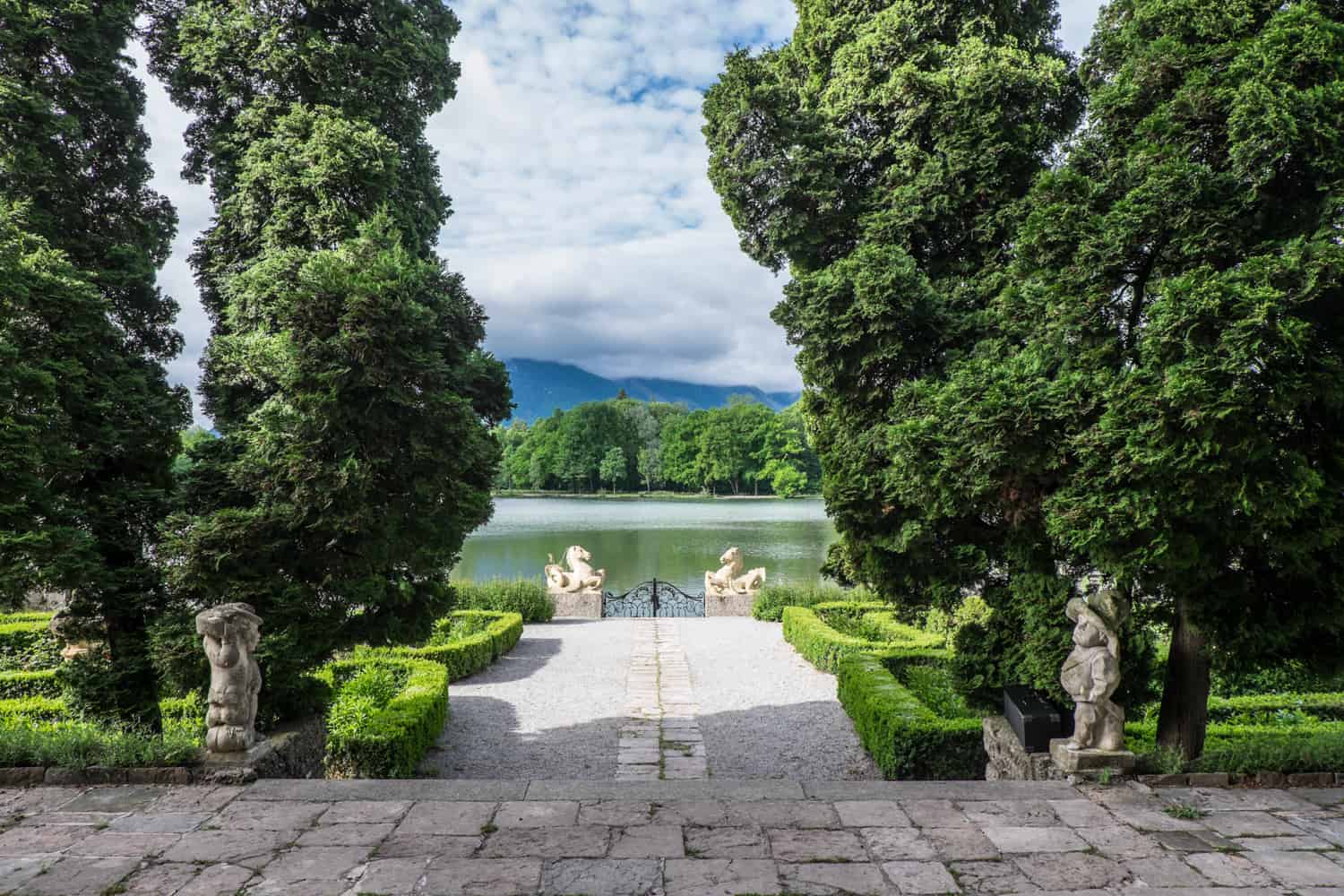
The Horse Head Gate, made famous in Sound of Music.
See Archbishop Heritage over Hapsburg Legacy
Salzburg’s historic city centre has been a World Heritage Site since 1997 and is seen as the most significant baroque city north of the Alps. It was built to be exquisite and display prosperity. Occupying a unique position in Europe as a Roman stronghold on the junction of a military road that linked the north and south of Europe, it came into being in the 7th century (year 700) when it was founded and ruled by independent Catholic Prince Archbishops.
Its absence of grandeur Hapsburg touches was replaced by those of the secular kind – with Cathedrals and beautiful baroque church spires, all set within large open Italian flair squares which today brim with artworks and views to the castle on the hilltop. The Archbishops’ power and affluence continued well into the 19th century, who built the city from the wealth accumulated through salt trading (hence the city’s name). It only became a part of the Habsburg Empire in 1816.
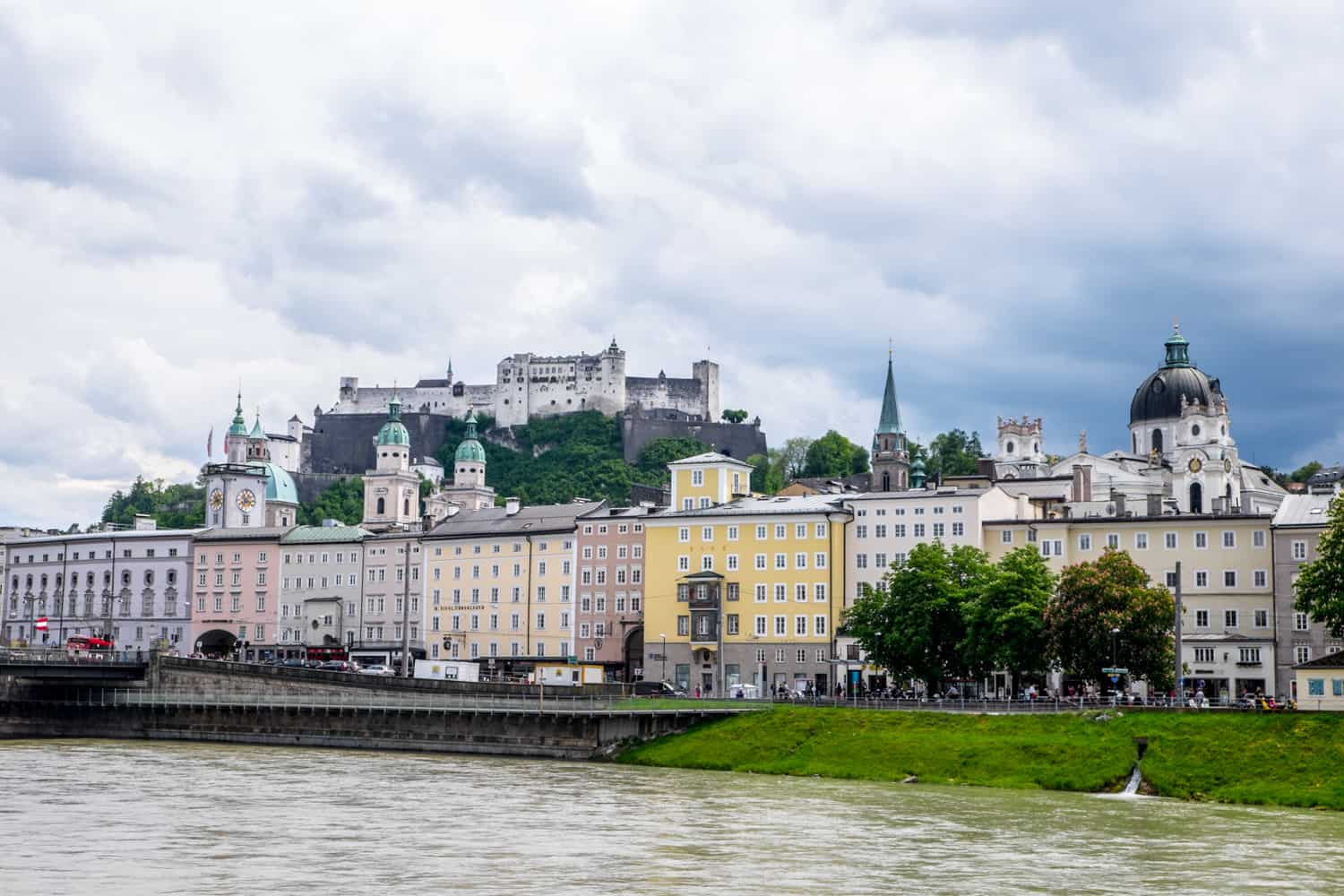
Riverside view of Salzburg city, UNESCO World Heritage Site of Austria
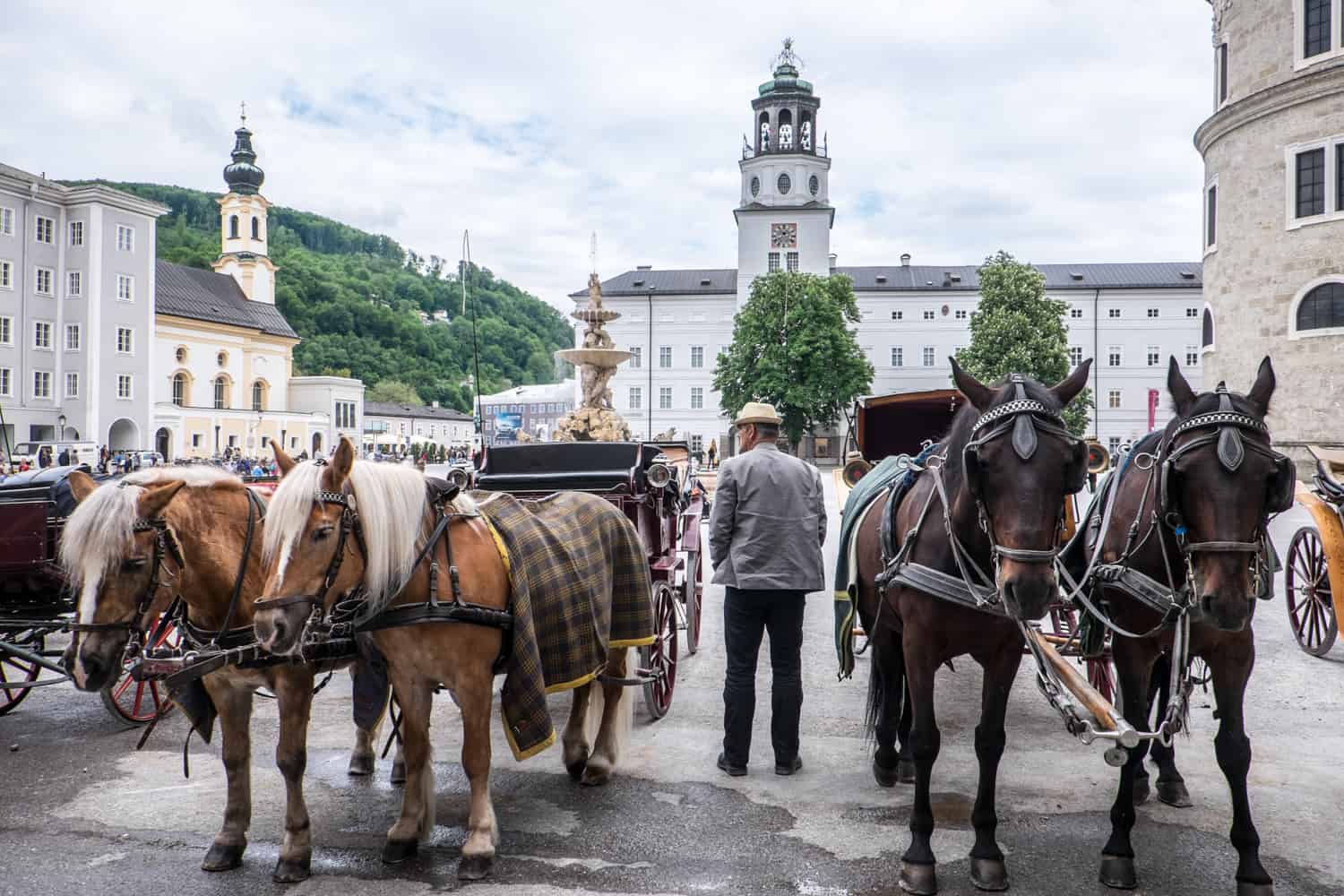
In the very heart of the city centre of Salzburg, Austria
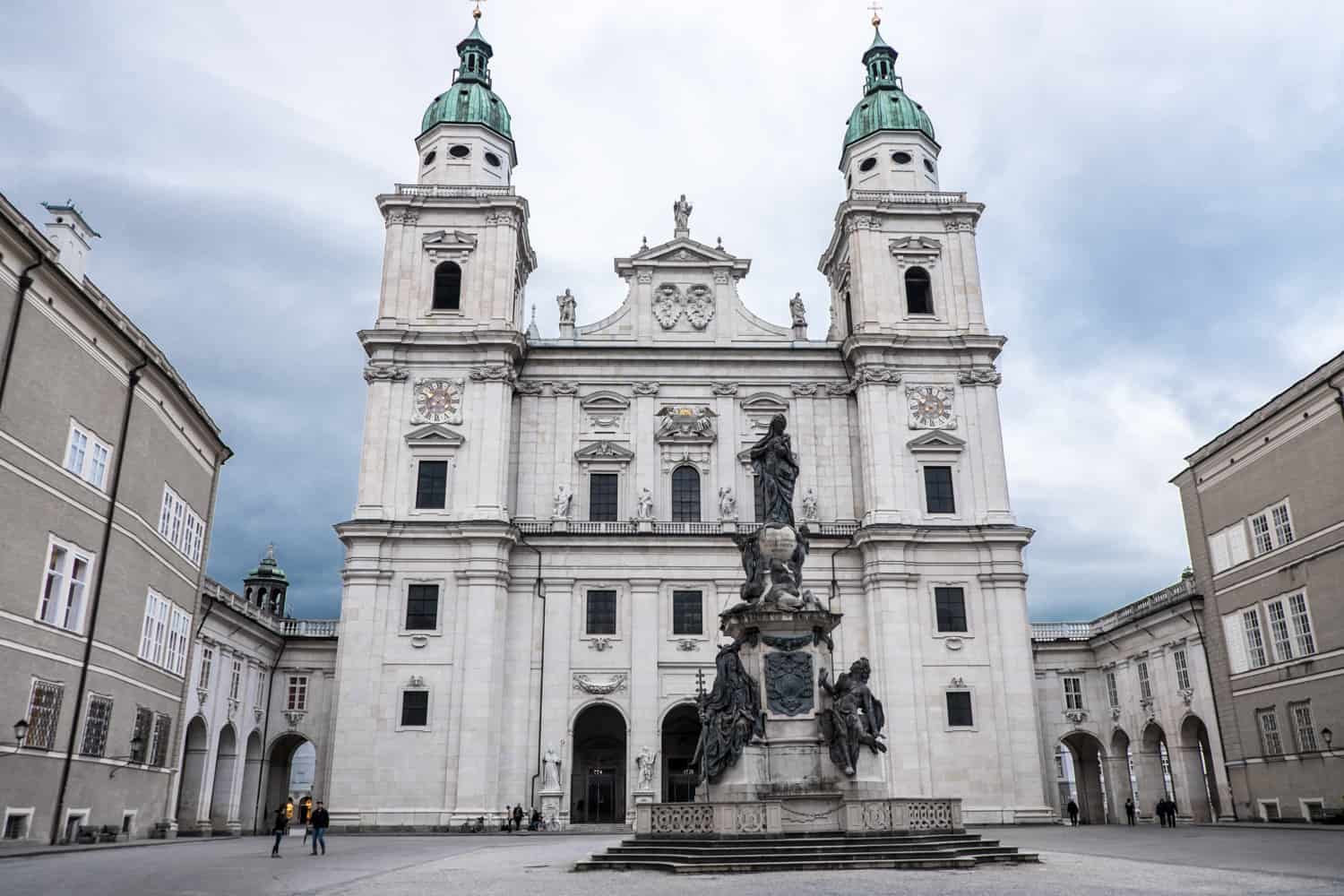
One of the grand public squares in Salzburg.
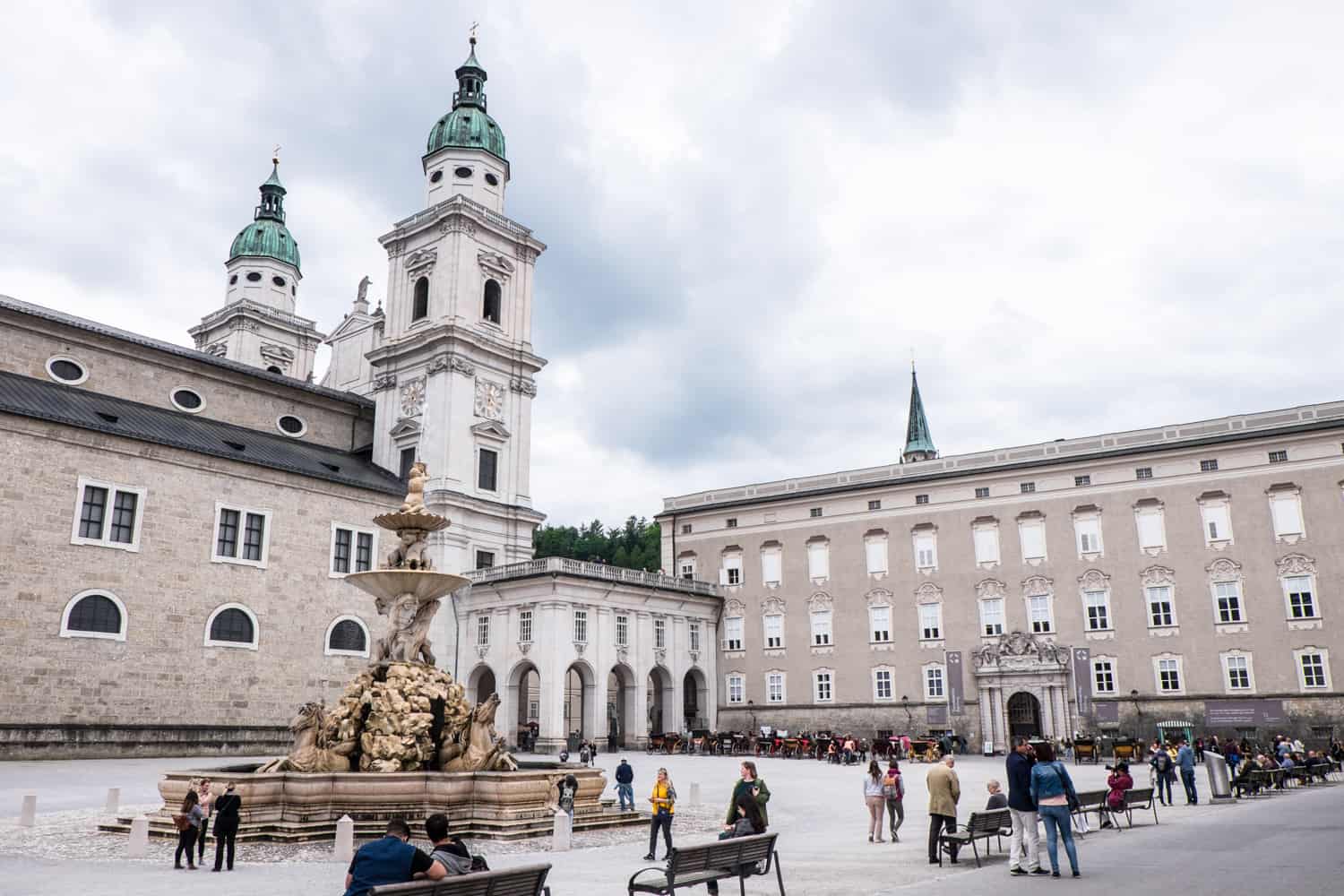
Salzburg’s Golden Fountain.
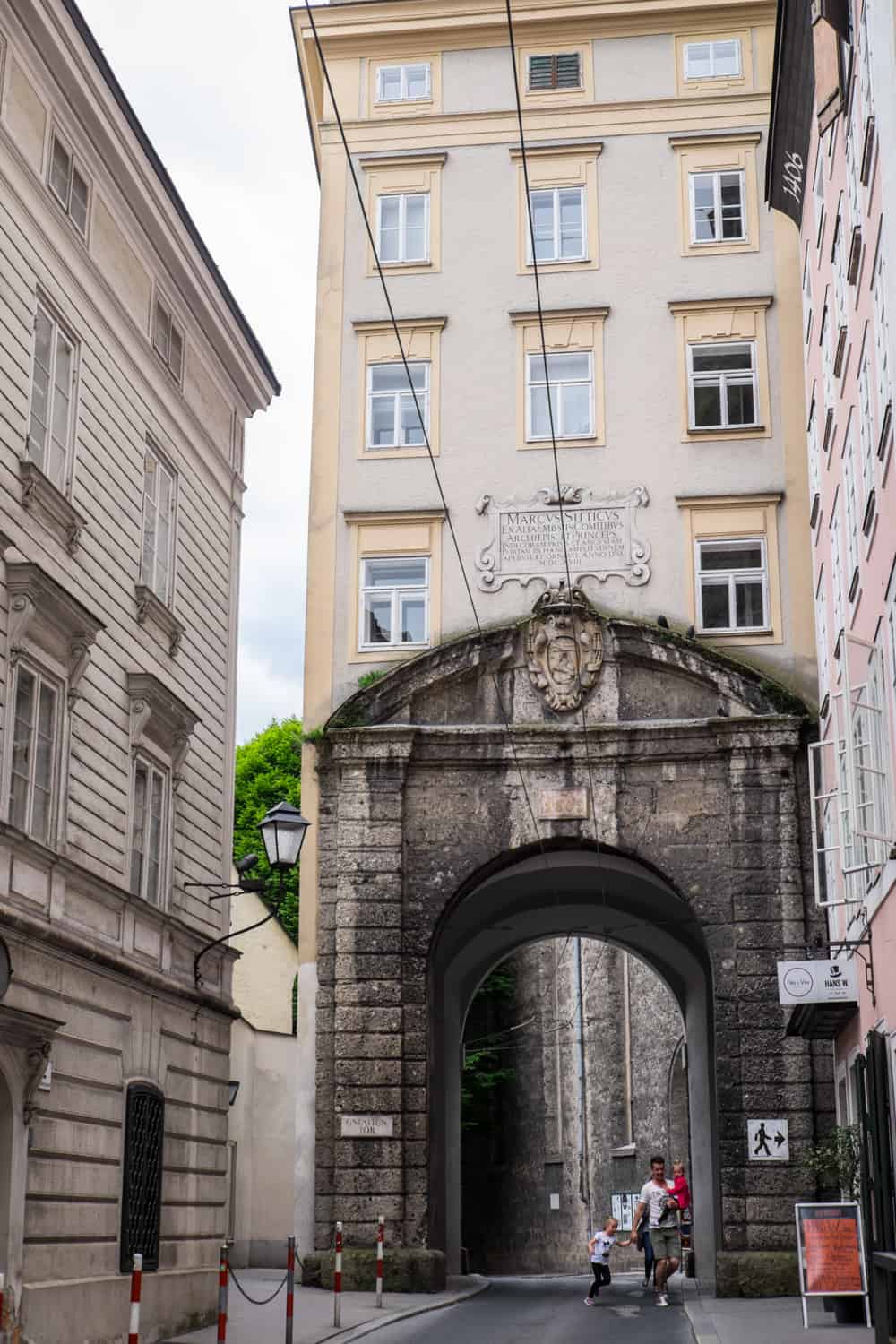
Old City Gate’s of Salzburg – the still visible doorways to the past.
Wander Getreidegasse – the Stunning Shopping Mile
In place of pastel candy coloured noble houses and overshadowing the art nouveau touches of the Austrian monarchy, you’ll find alternative splendour in pretty avenues. One particular highlight is Getreidegasse – a notable street and stunning shopping mile full of traditional confectioners, tailors and weavers alongside international brands.
The defining feature of Getreidegasse is the uniform design of the shop signs. Notice how McDonald’s even adheres to the signage styling.
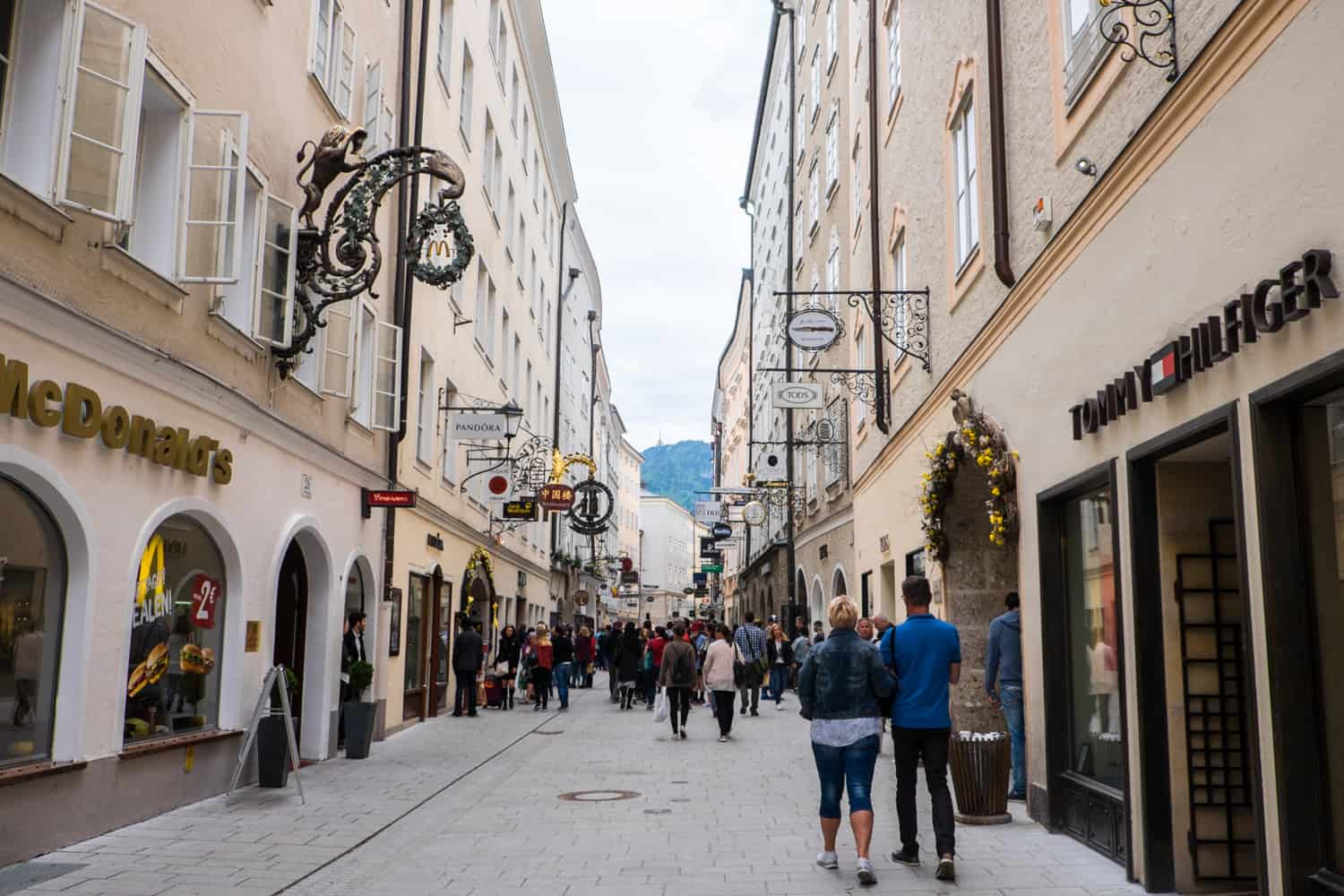
The famed Getreidegasse shopping street in Salzburg.
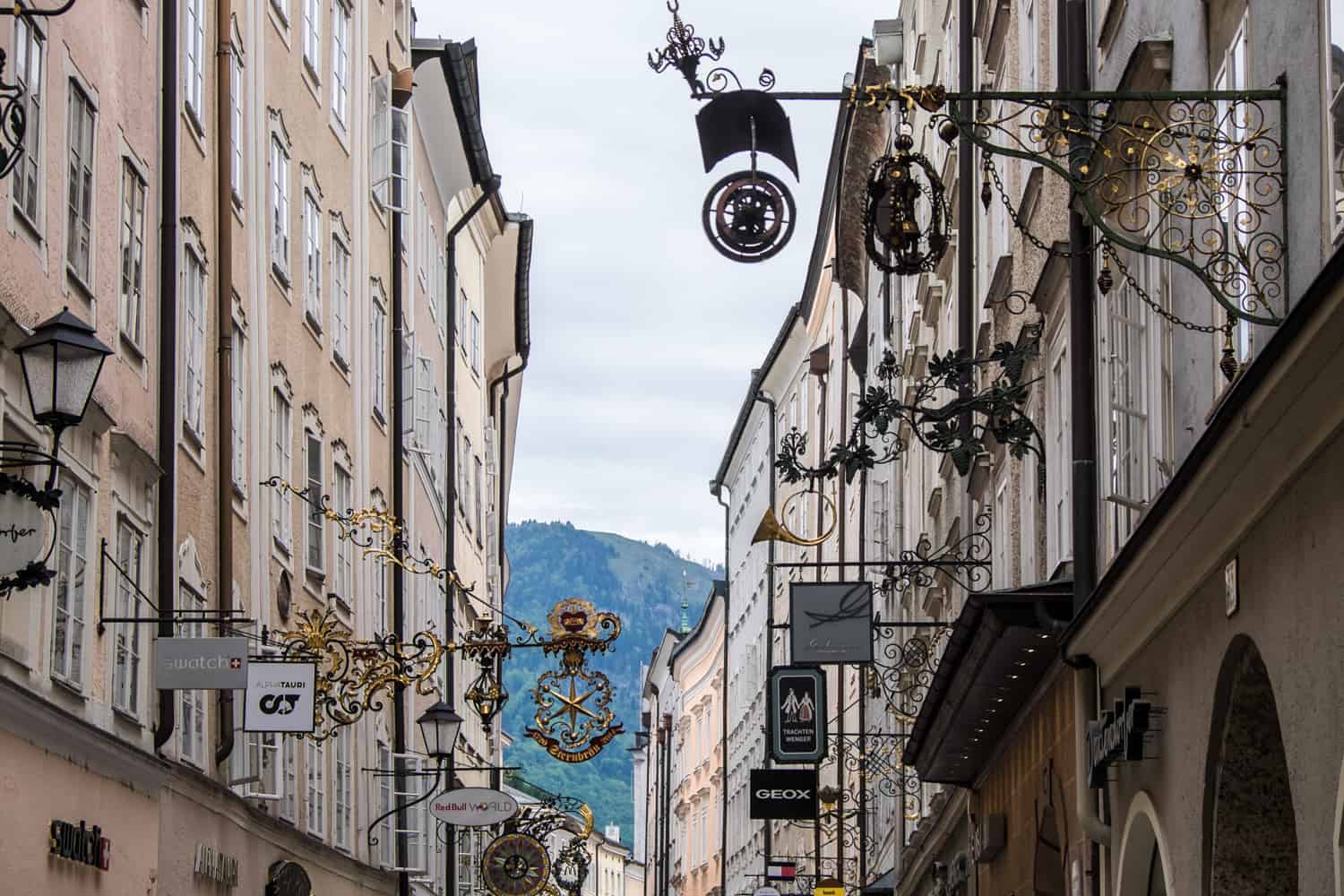
Stroll the Schloss Mirabell Gardens
Beyond the centrepieces of Sound of Music Fame, the palace structure, manicured gardens and opulent fountains of the Schloss Mirabell and the Mirabell Gardens are a must for a sample of quintessential, classic Salzburg. Views are topped off with a scattering of mint-coloured rooftops as you gaze towards the castle complex on the hill.
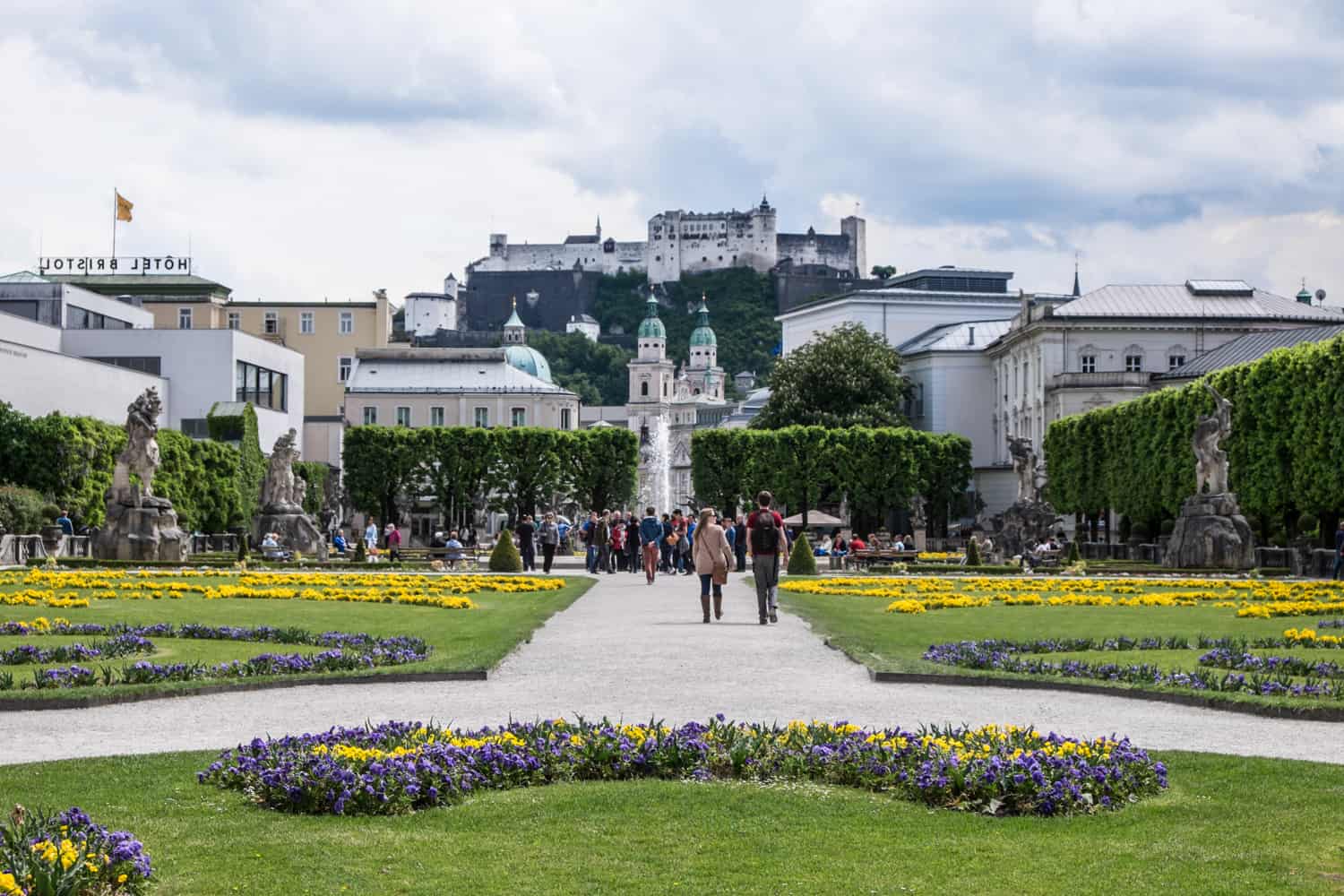
Famous fortress view from the Mirabell Gardens in Salzburg.
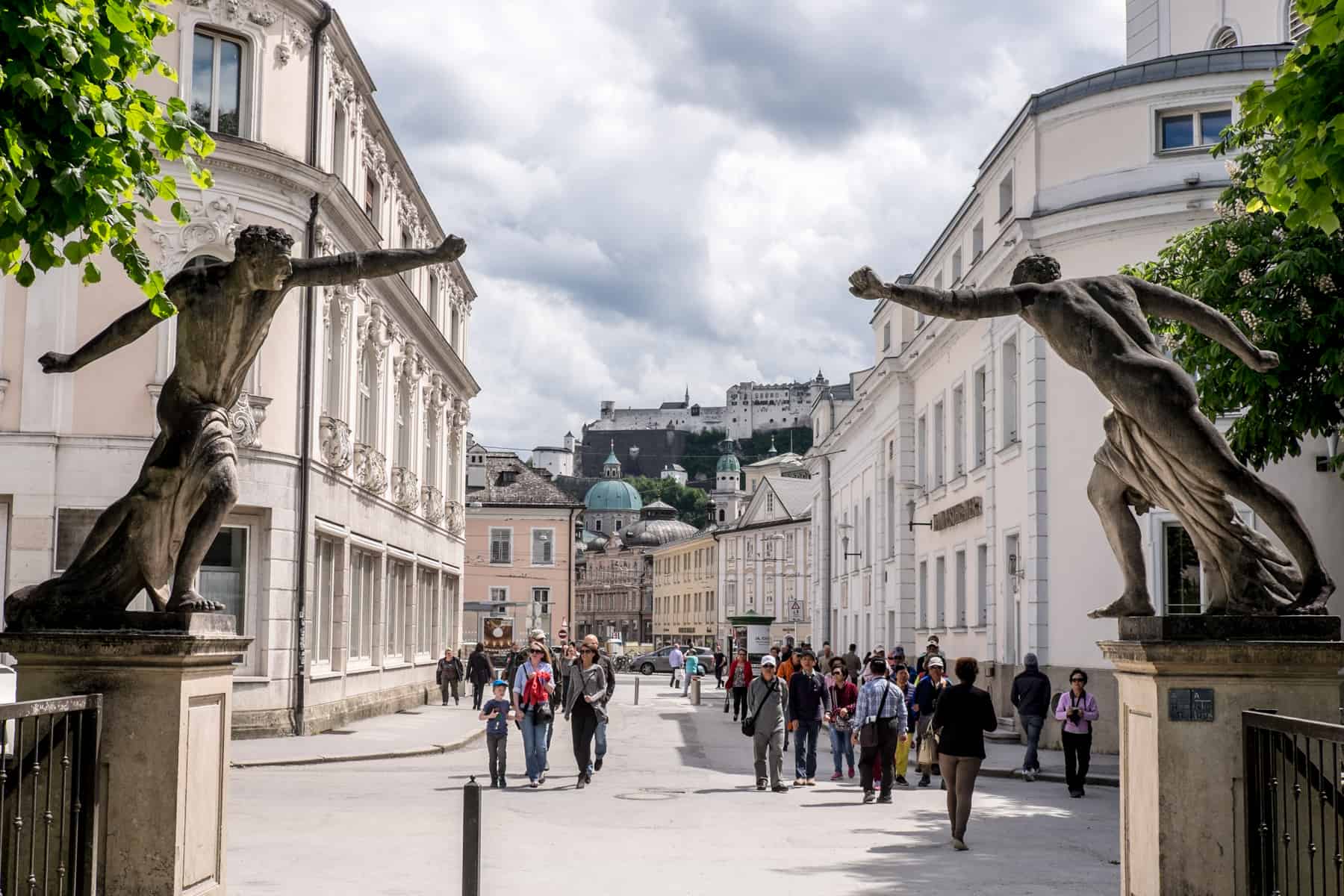
The grand gate of the Mirabell Gardens.
Find the Smallest House in Salzburg
The smallest house in Salzburg (No. 10a Alter Markt) is less than 1.5 metres wide, yet perfectly blends in. The legend is that a young man went to his future wife’s father to ask for her hand in marriage. The father permitted the marriage only if the man could provide his daughter with a house and this was all his funds permitted.
The truth is the house was built to fill an old Medieval alleyway between the larger houses on either side of it and is, today, a jewellery store.
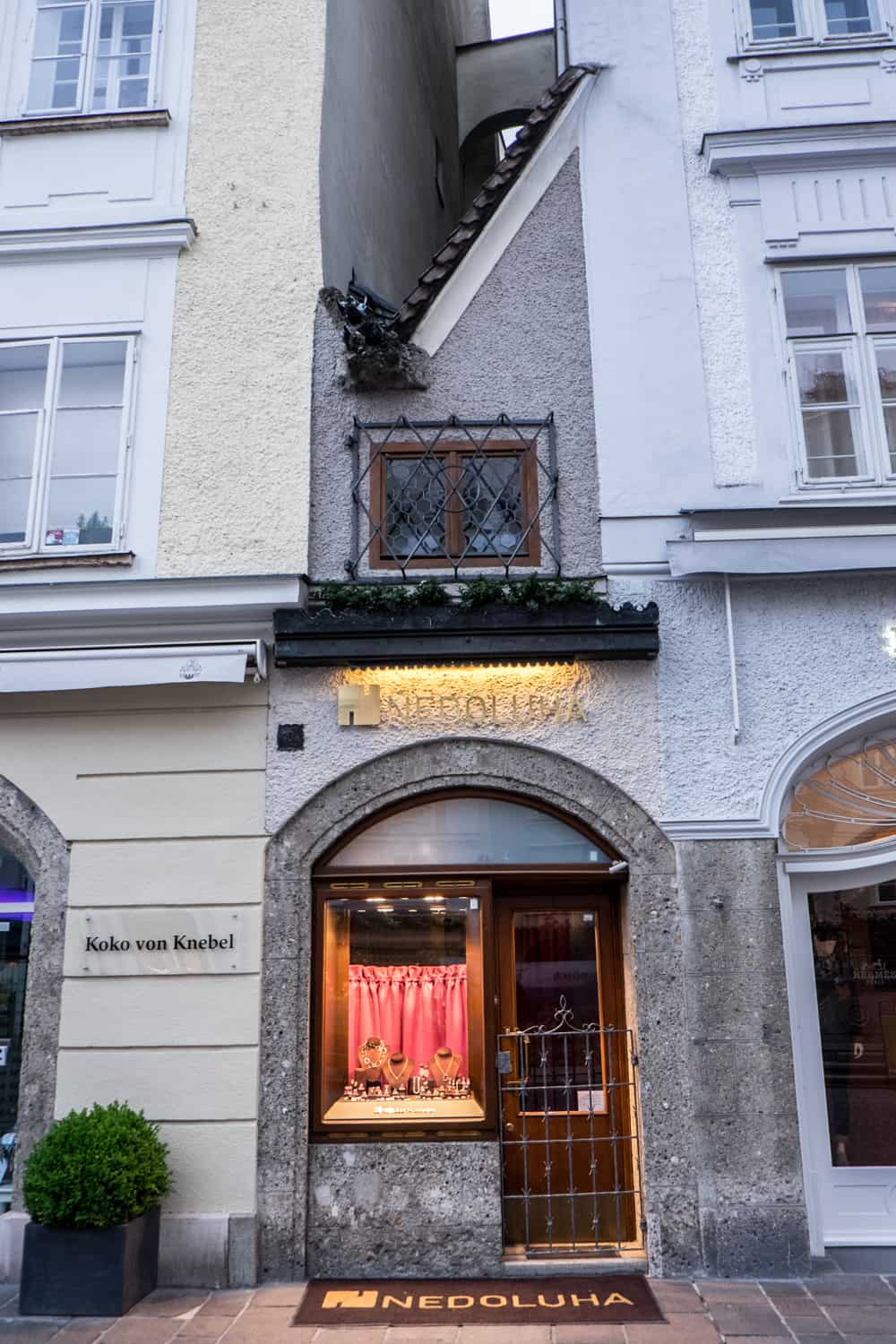
10a Alter Markt – the smallest house in Salzburg.
Enjoy the Best Viewpoint over Salzburg
Admire the city’s 1,000 protected buildings from various elevated viewpoints in the city. The best is the rooftop of the Museum of Modern Art, which is a full window on the city that includes the 11th-century Hohensalzburg Fortress – the medieval castle that watches over the city (itself a frequented panoramic vantage point).
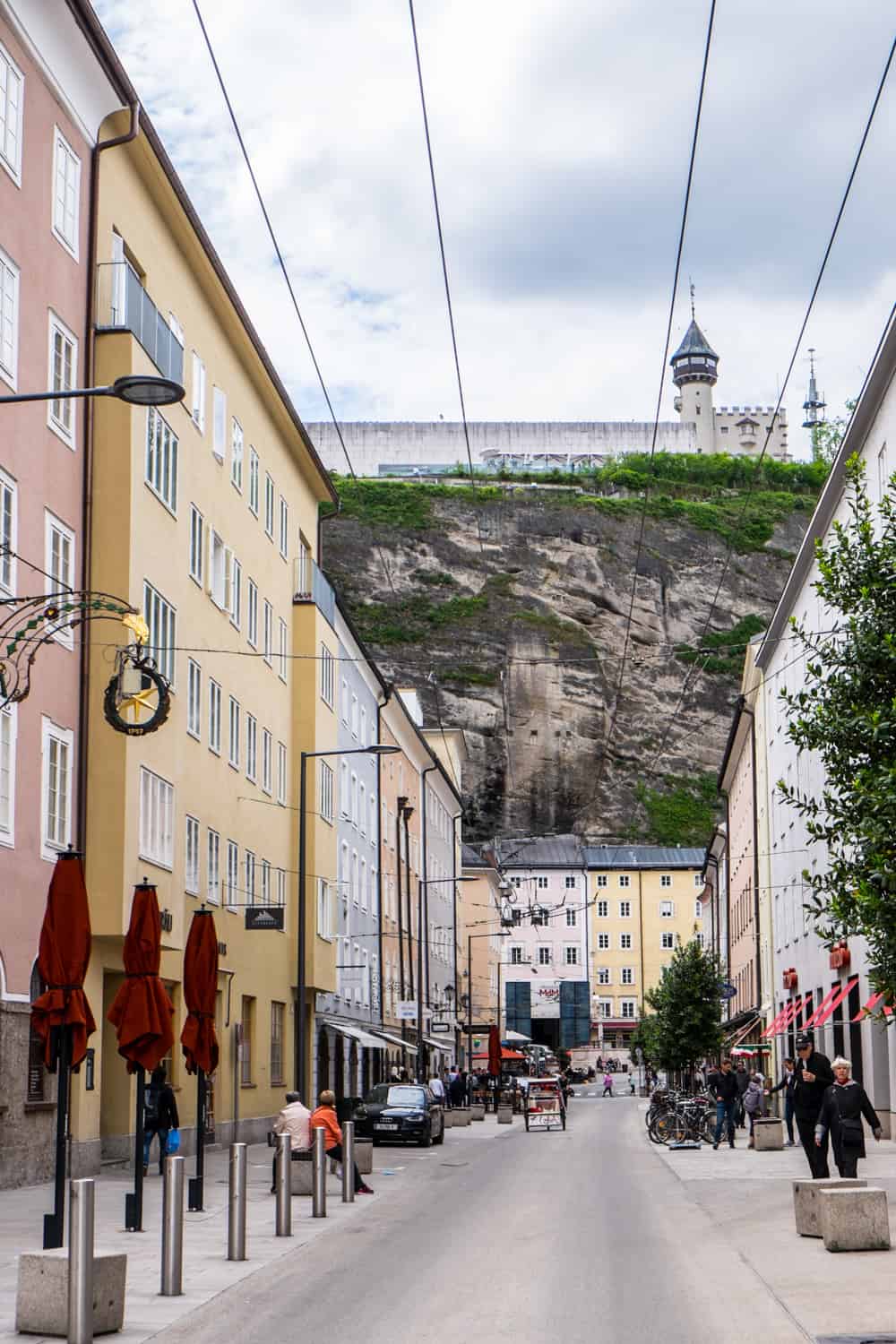
Get up to the modern art museum at the Hohensalzburg Fortress for the best view over Salzburg.

The best panoramic shot from Salzburg from the top of the Modern Art Museum
Explore Modern Salzburg Filled With Artworks
On the subject of modern art, Salzburg doesn’t just covert the best of it in museums. Modern artworks like the man on the golden globe and the giant interactive chessboard, add colour and curiosity to old squares as you stop and gaze at the baroque structures that dominate.
I always like to see how old cities add some modern spark to stay exciting and relevant to all manner of visitors. Salzburg is decadent, but it isn’t without a subtle coating of youthful vibes and modern creative inclusions, which are fun to find and push you to explore outside the architectural boundaries of the historic centre.
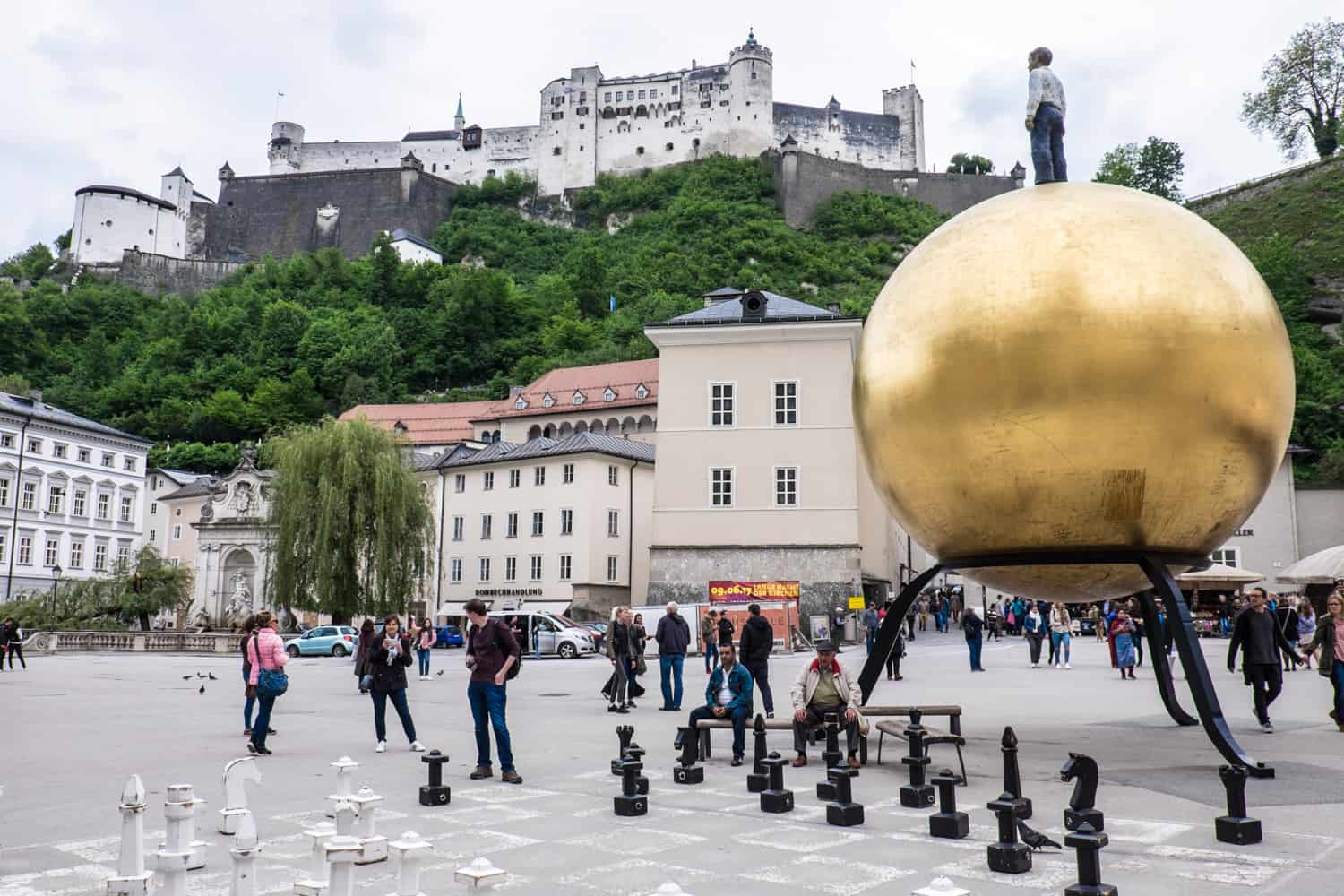
Two of the best modern artworks in Salzburg’s historical city centre.
Live Five Centuries of Salzburg Beer Heritage
Salzburg is a city with over 500 years of beer heritage. It’s a rite of passage to immerse yourself in Salzburg’s beer heritage and sip on a Steiner at the Augustiner Brewery as you marvel at the history of the monks.
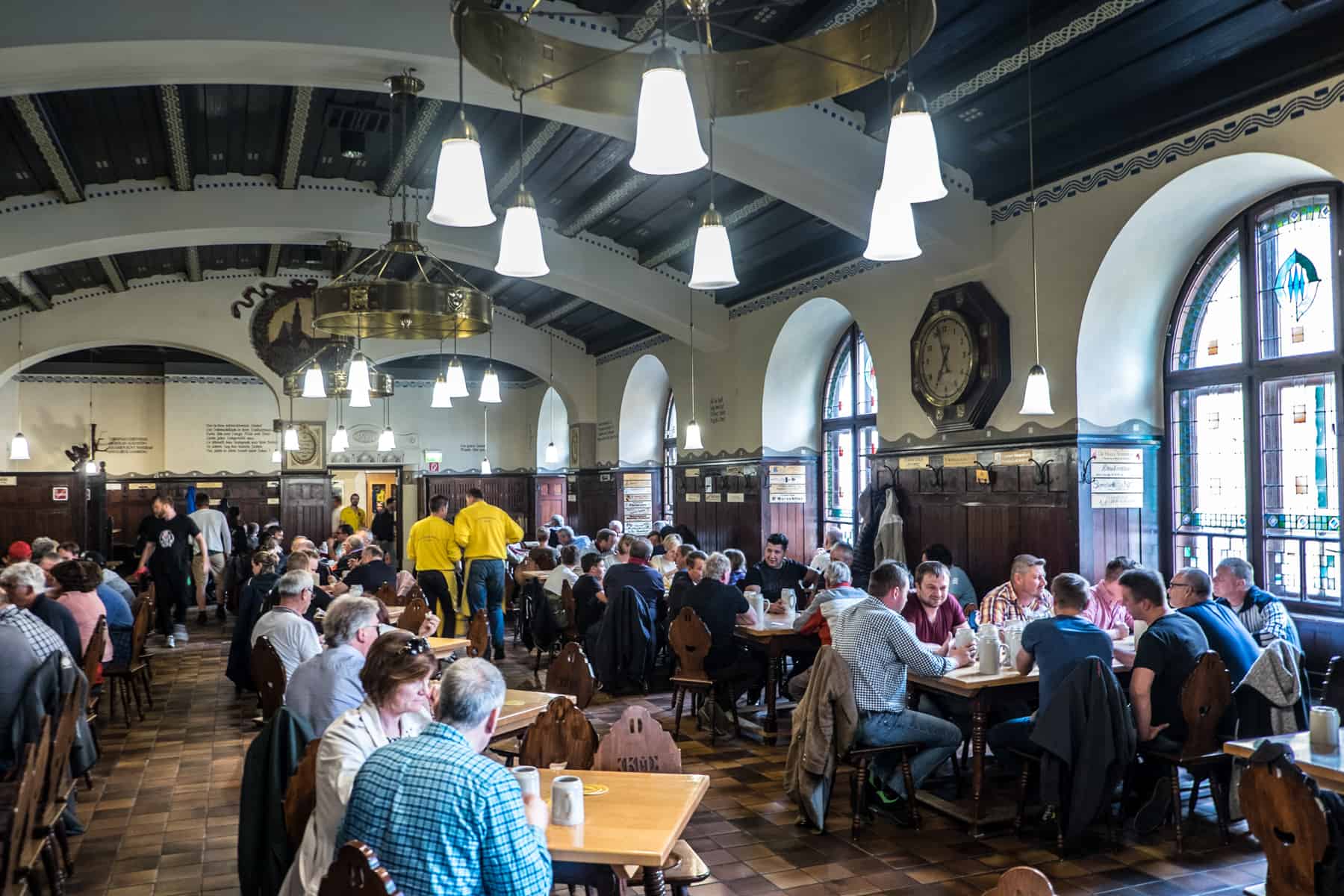
Ancient beer halls of the Augustiner Brewery in Salzburg.
First, you choose the size of your Steiner, pay for it and then let one of the guys fill you up from the barrel. Find a table, socialise with locals and grab some traditional foods, which you can find served outside the giant beer halls.
Even if you are on your own, as I was, you will strike up a conversation since sharing tables is a part of the beer culture. My good friend, Steph, demonstrates the scale of the beer from her visit a month before mine.

Drink beer at Augustiner Brewery in Salzburg
Still thirsty? Head to the 17th century established Stiegl Brewery that is still in operation today.
Cross the River – See Salzburg Differently
It’s easy to spend all your time on the side of the river where the historical centre and old town is. Yet, a simple river cross to the other side reveals another side of Salzburg, where trendy neighbourhoods are thriving in timeworn alleyways and cosy city corners.
Walk Along Steingasse – the Oldest Street in Salzburg
Get to Steingasse, across the river from the Historic Old Town. Stone Street (as it translates) is the oldest street in Salzburg, and this quiet, historical alleyway of the city is not forgotten but is a place where street art and trendy neighbourhood vibes are emerging.
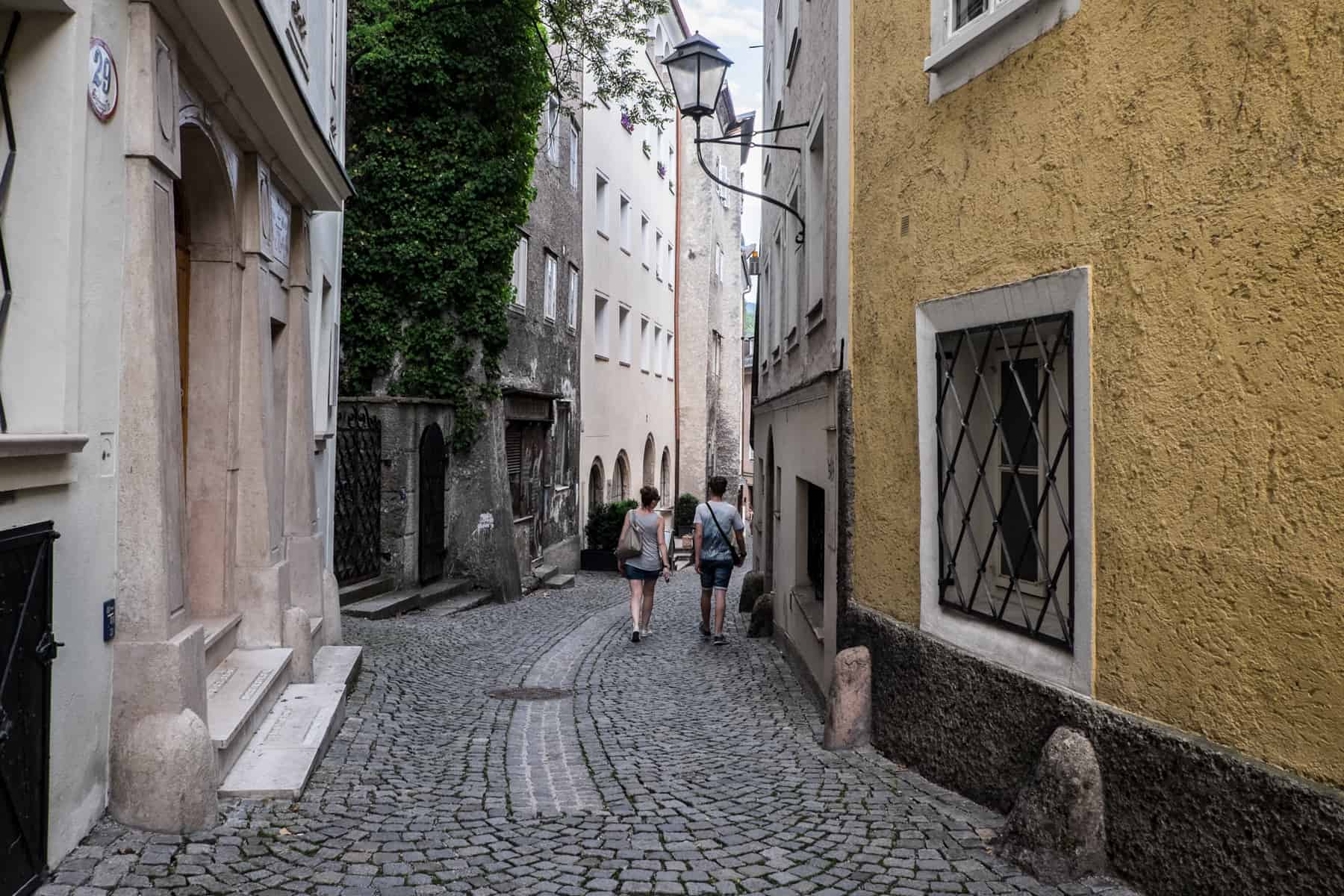
The beautiful and hidden Steingasse – the oldest street in Salzburg.
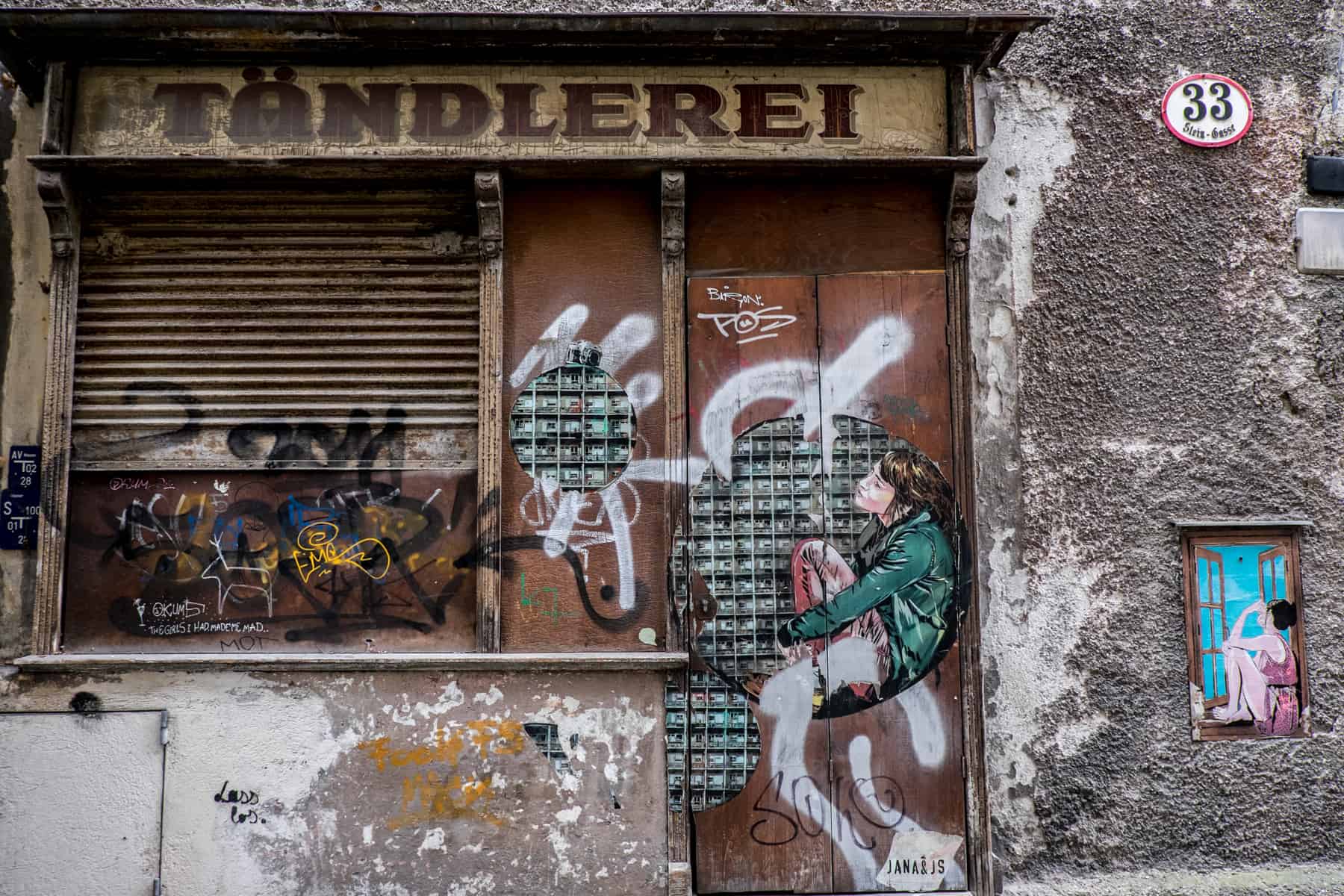
Street art and old shop signs merge on the trendy Steingasse street.
Go Local in Salzburg’s Andräviertel Neighbourhood
While you are on this side of the river, wander through the neighbourhood of Andräviertel. It’s quieter, has some independent stores and cafes, adding to a growing bohemian feel that makes it feel like a different ‘halve’ of Salzburg across the water.
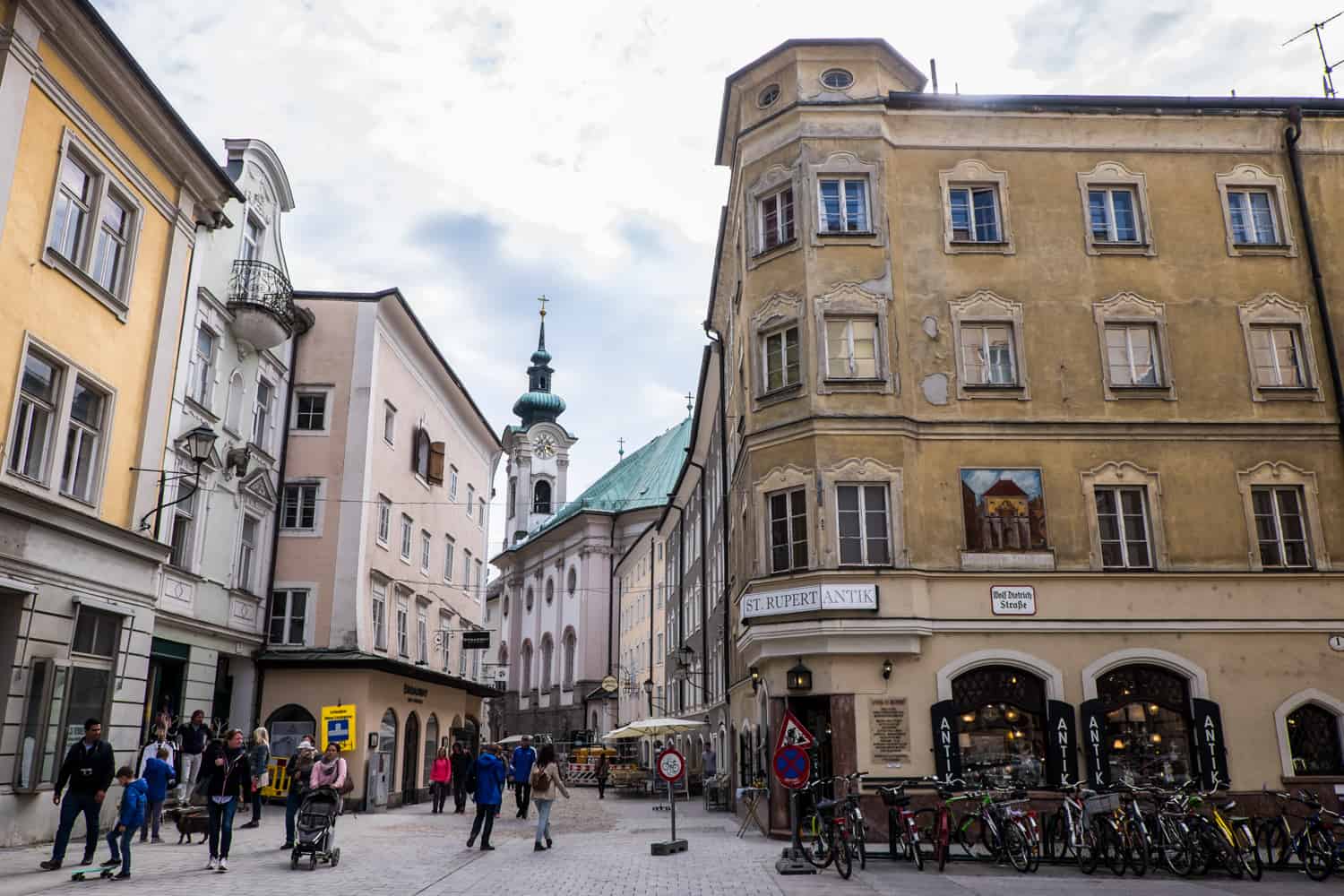
Salzburg’s Andräviertel Neighbourhood. The other side of the city.
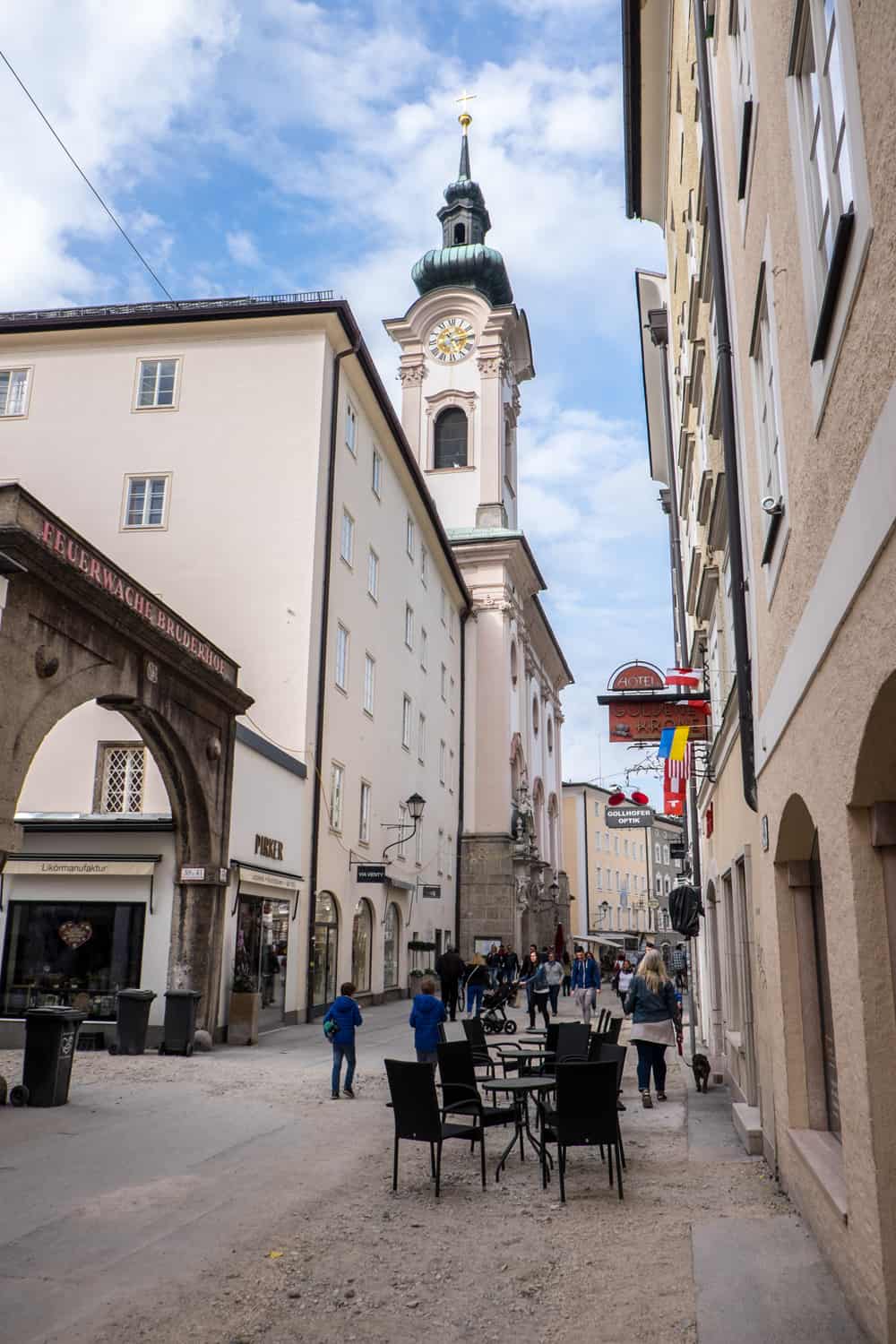
Local Salzburg in Andräviertel.
A University City, you’ll stumble across from the hum of coffee houses in courtyards, trendy bars and eateries that feed the young heart. Salzburg is where ‘Lederhosen Donnerstag’ (Lederhosen Thursday) was established, where young people come together in traditional clothing to socialise and muse in a modern establishment on this chosen day of the week. The city is known for its endless array of Dirndl and Lederhosen shops, and this fun movement keeps the culture alive in a modern setting.
What to Do in Salzburg for the Music
Go on The Sound of Music Tour
Hollywood can often ruin a city, especially one made famous by the longest standing musical film of all time that attracts over 300,000 tourists a year. However, while some of the 1965 film’s scenes are within the centre of the city, many remain outside of it, accessible only by your meticulous planning (and special permission) or via The Sound of Music Panorama Tours bus.
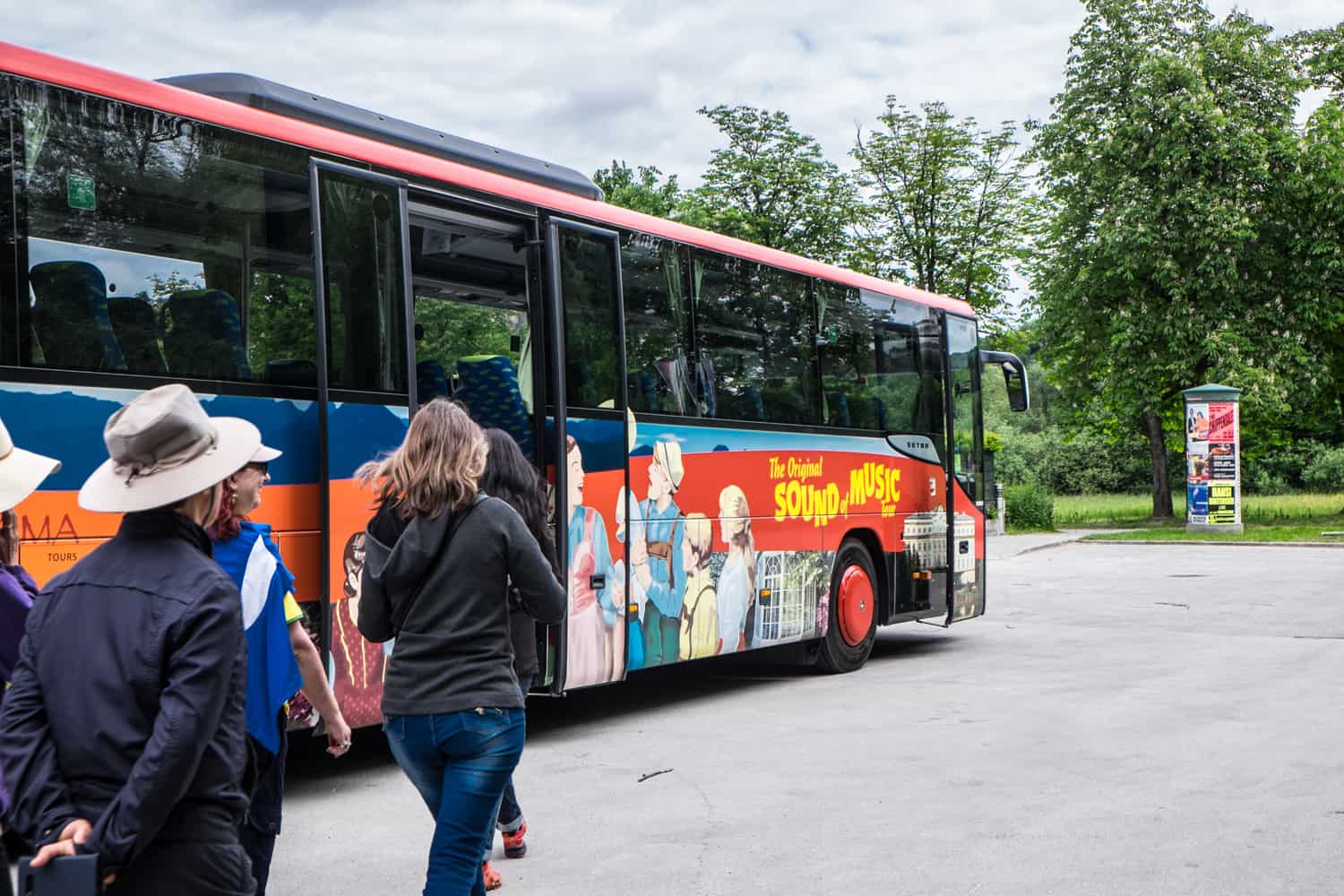
The Sound of Music bus tour in Salzburg
I admit I was a little pessimistic about a bus tour since I like to bounce around on my own time. But here’s the honesty. It was one of the most fun mornings I’ve ever had – a bus full of excitable Sound of Music fans hyper on Do Re Me, My Favourite Things, How do You Solve a Problem like Maria and all other tunes, while staring out of the window at Salzburg’s green vistas. Panorama Tours have created a sing-along, multi-stop schedule that runs every day of the year (because it is THAT in demand).
It stops at various highlights including the other side of the Schloss Leopoldskron pond (access is only available if you stay at the property), the white gazebo known for “Sixteen going on Seventeen”. It passes the outskirts of Villa Trapp, heads out to the church where Maria and Captain Von Trapp got married and ends at the beautiful Schloss Mirabell in the city. So you can dance on the Pegasus (Do-Re-Mi) fountain and snap yourself on the famous stairs at the Mirabell Gardens.
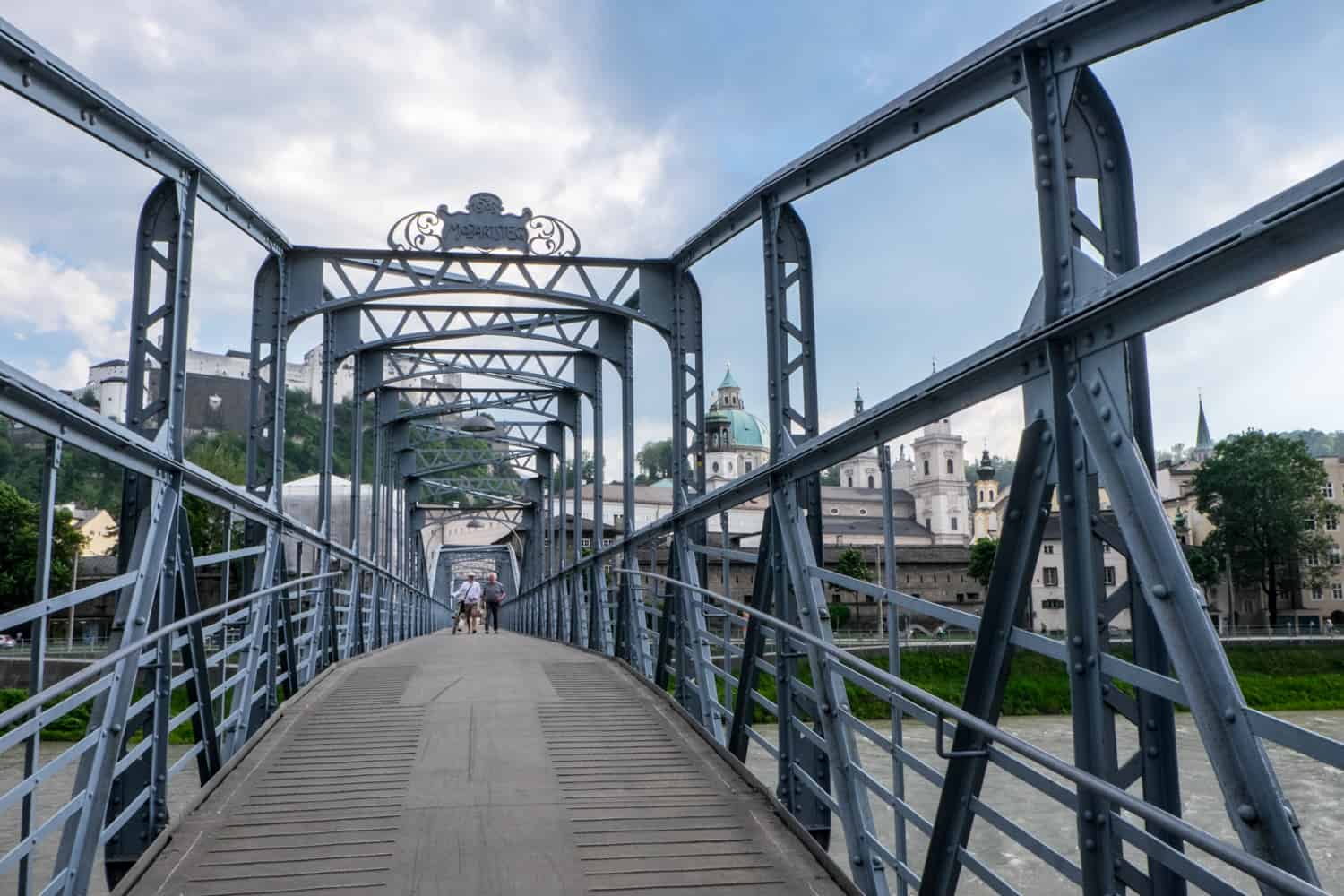

The Do Re Me Bridge from the Sound of Music, crossing the Salzach River in central Salzburg.
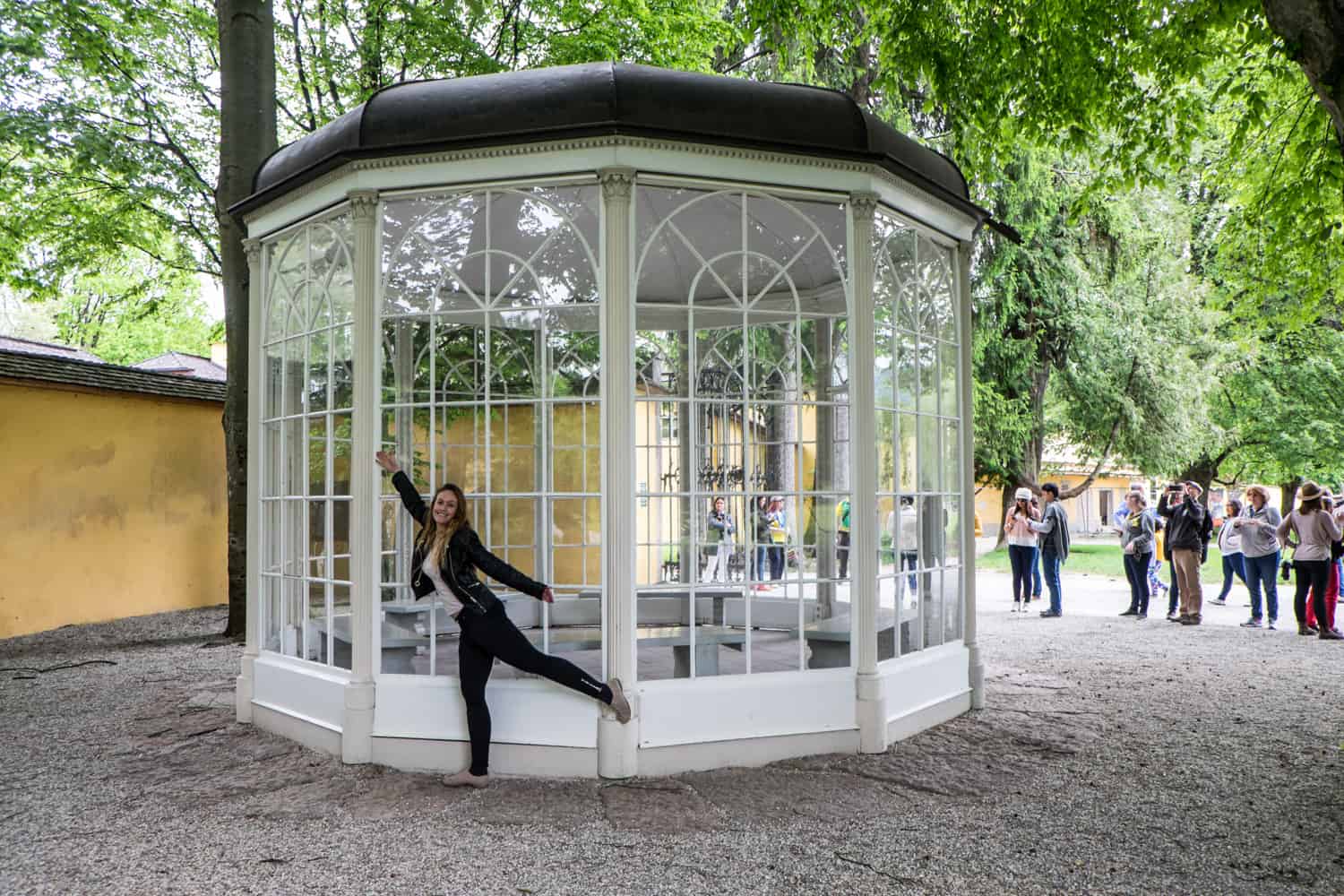
The “Sixteen going on Seventeen” gazebo.
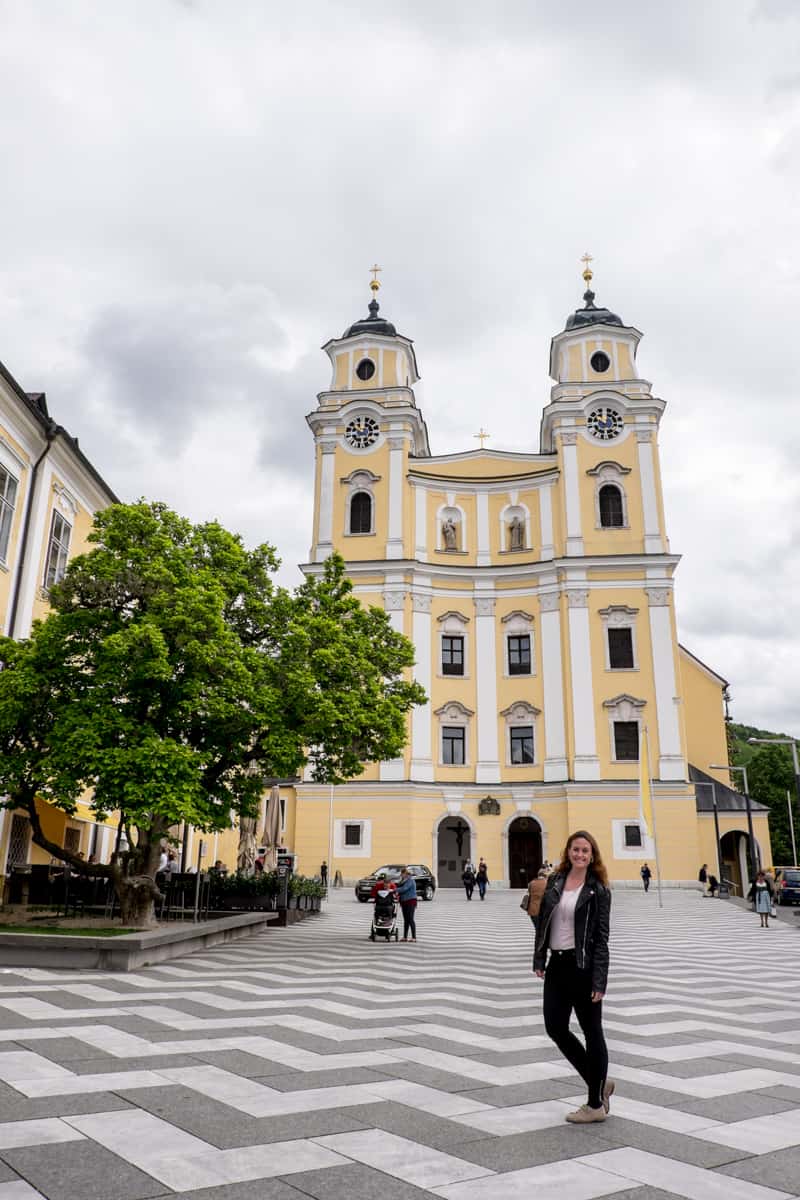
Mondsee Cathedral, used for the marriage scene.
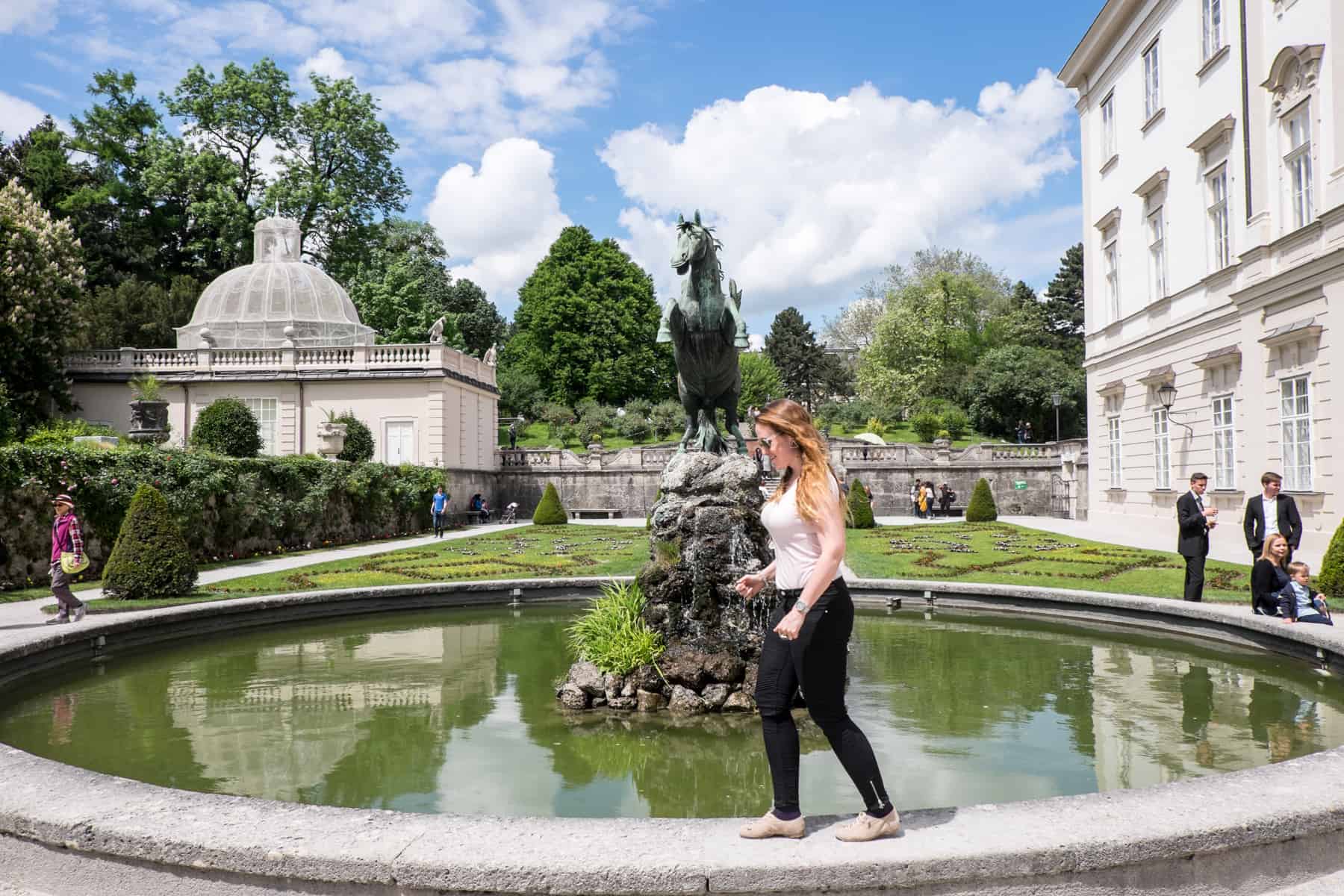
The Pegasus fountain in the Schloss Mirabell from Do-Re-Mi.
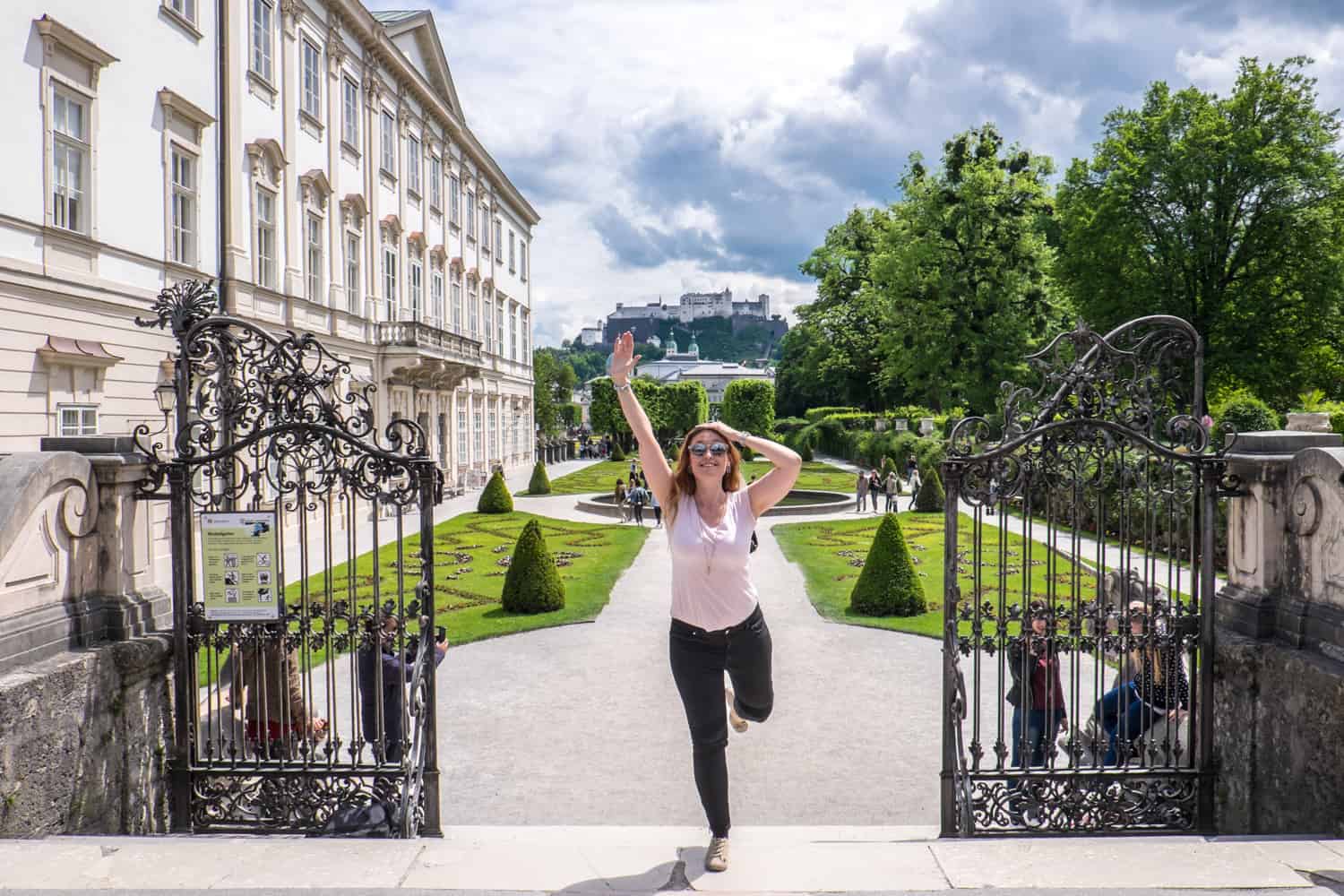
The film famous stairs at the Mirabell Gardens.
The tour is also a way of getting out in the surrounding nature of Salzburg, where you can spot the Untersberg – the panoramas used in the opening scenes of the Sound of Music. While the city pops with gardens and cycle paths, the mountain ranges of the Mönchsberg, Festungberg and Kapuzinerberg hug the city, whose old and modern districts get divided by the river Salzach.
On the Panorama Tours bus, you weave through these mountainous valleys and past half a dozen lakes, getting an introduction to the diversity of Salzburgerland state.
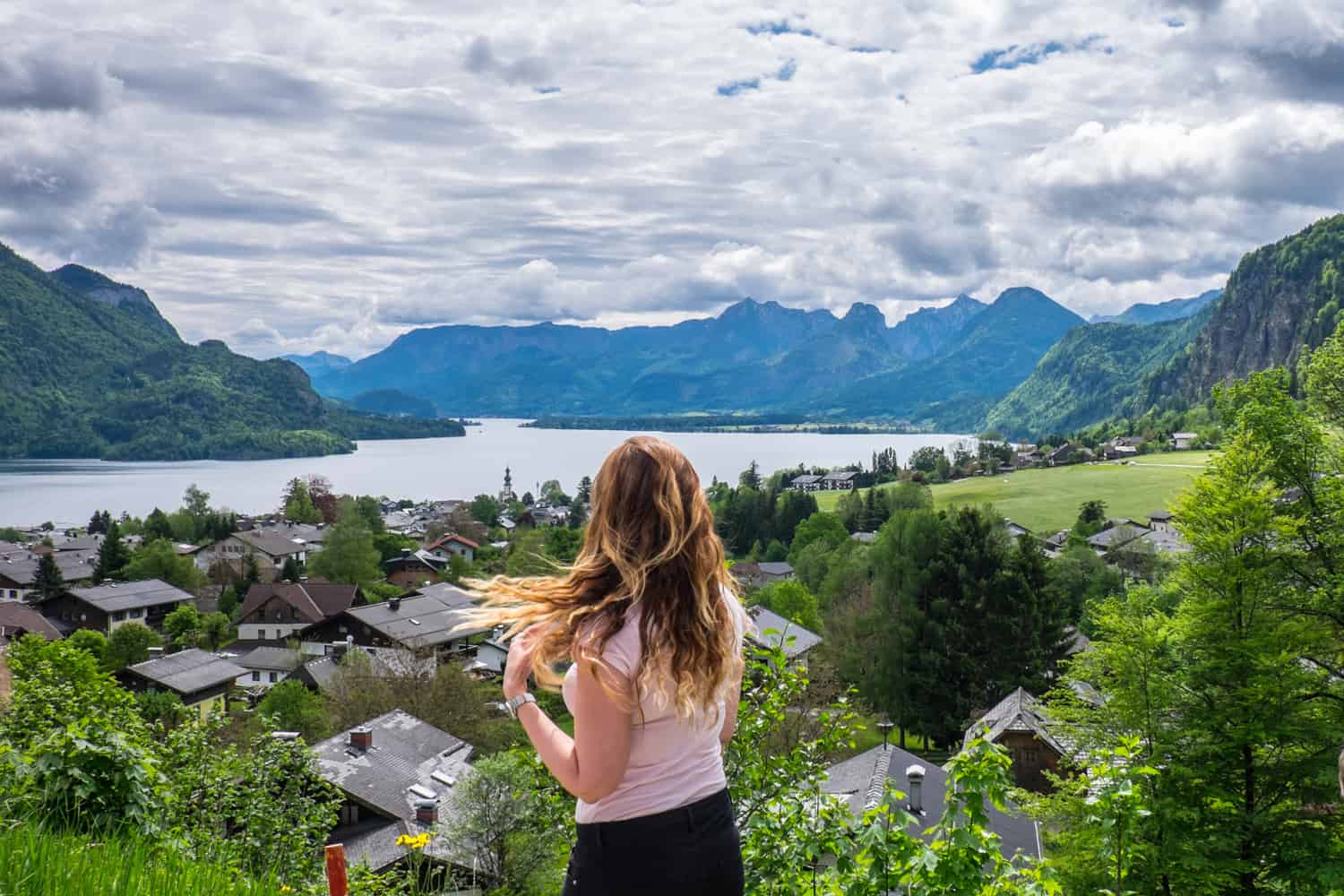
The panoramas used in the opening scenes of the Sound of Music.
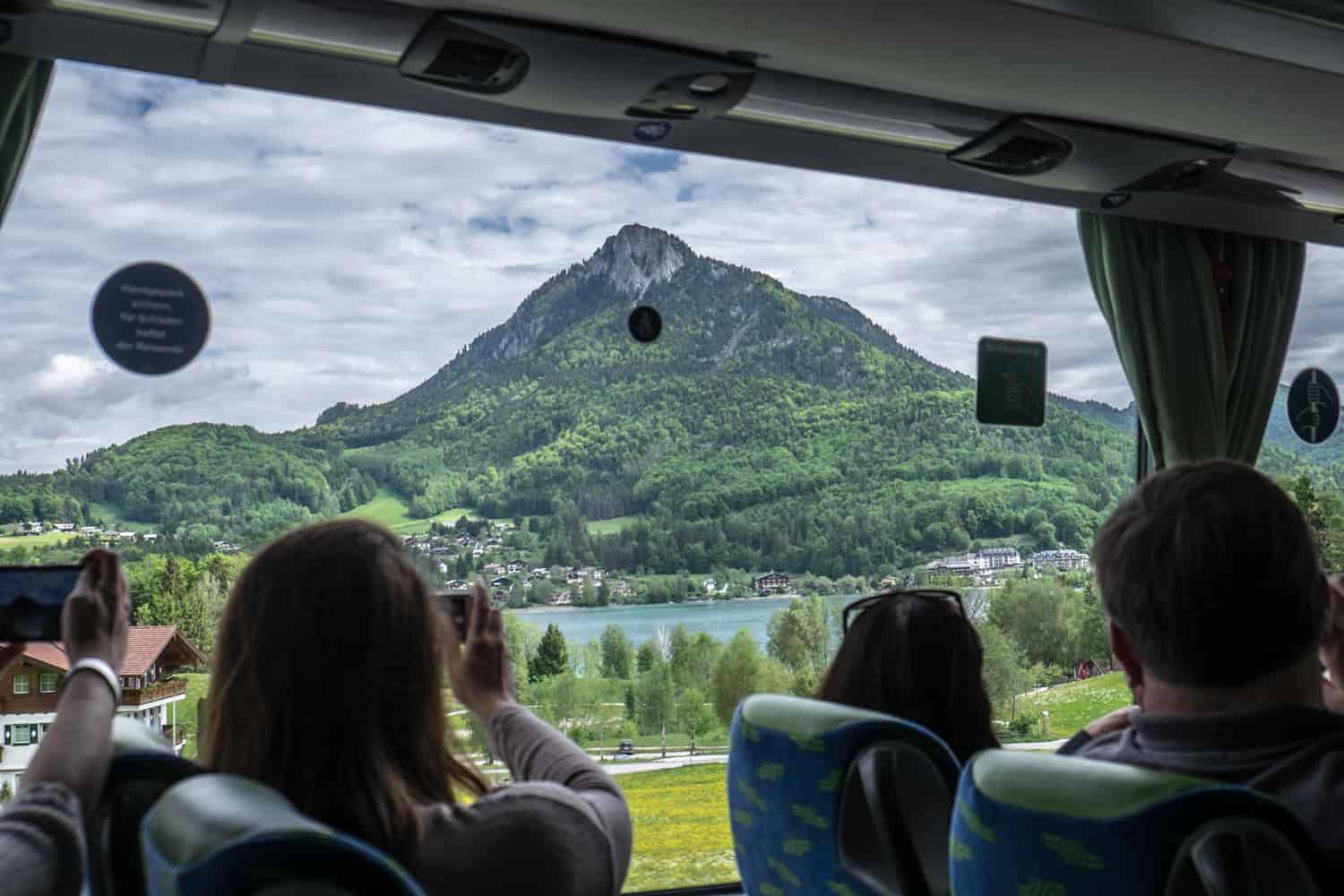
Scenes from the Panorama Tours bus.
You Can’t Visit Salzburg Without Honouring Mozart
Mozart is the city’s most famous son, born and bred in Salzburg and forever a part of its legacy.
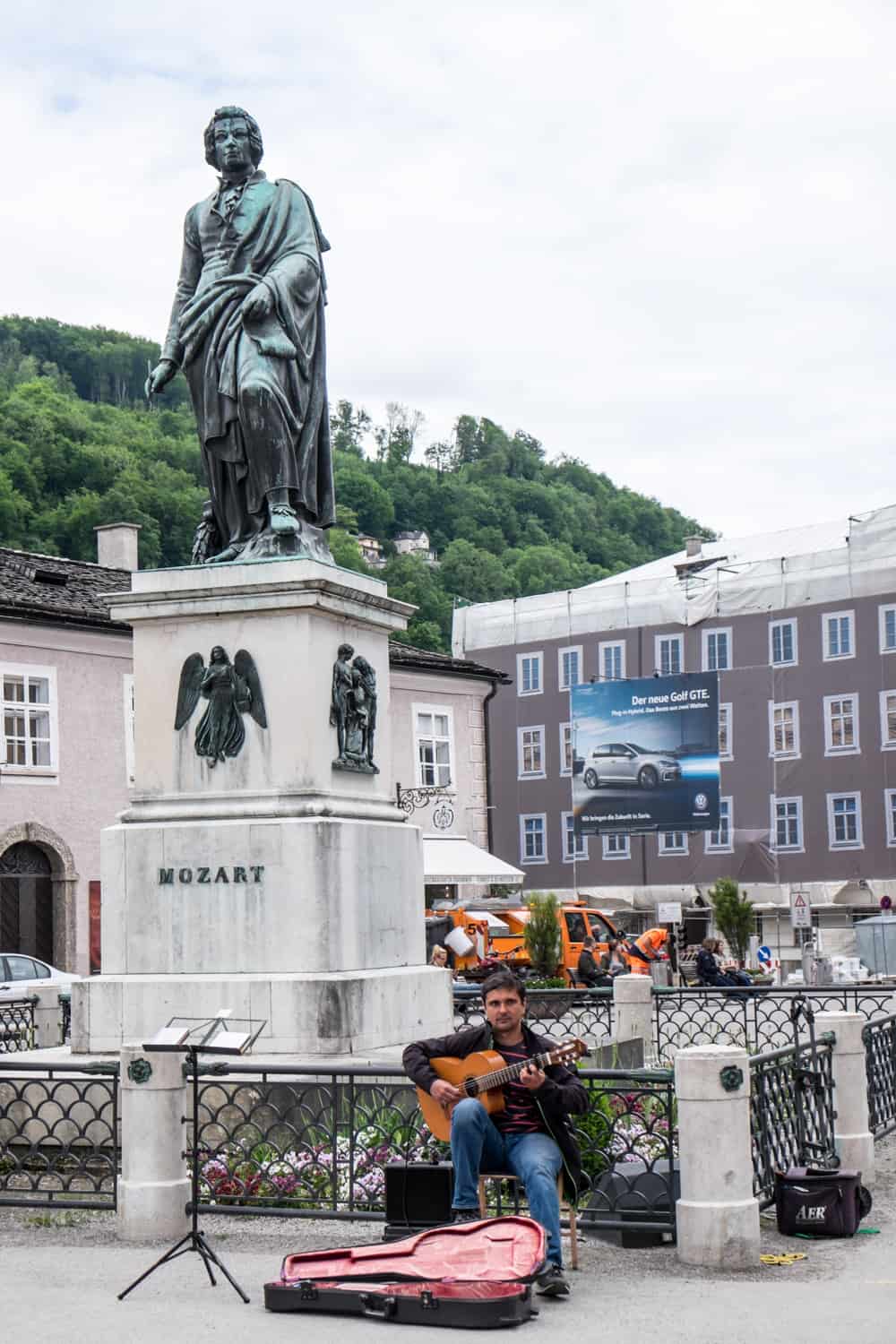
The Mozart Statue in Mozart, honouring his legacy in his birth city.
Born in Getreidegasse 9 (in 1756), today fans flock for a picture outside the building’s brightly painted yellow façade, which now incorporates a permanent exhibition about his life and career.
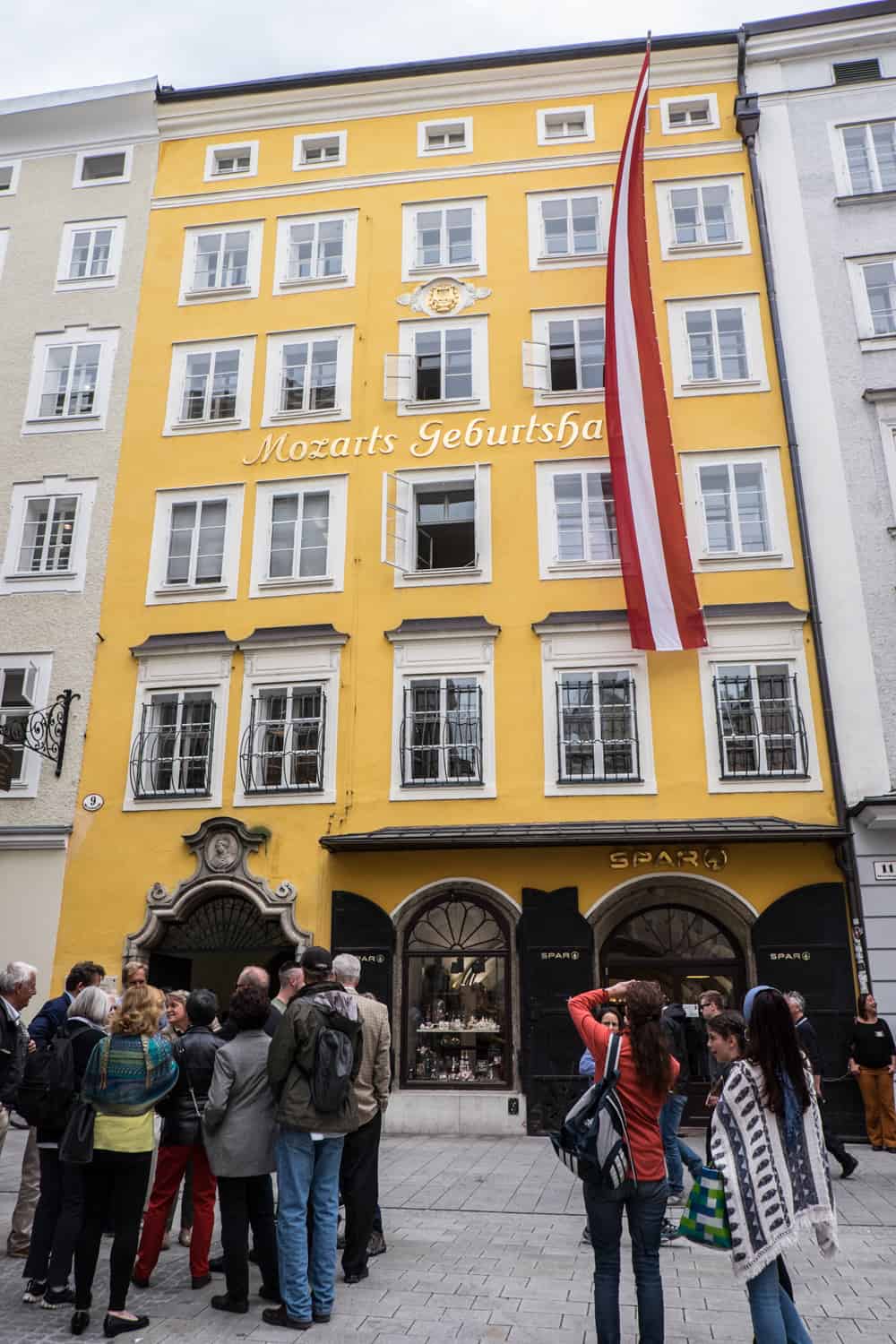
Getreidegasse 9 – Mozart’s Birth House.
Afterwards, you can indulge in a Mozartkugel chocolate, whose silver and blue wrapper marks it out as the “Original Salzburger Mozartkugel” – the real deal compared to the red and gold wrapped ‘souvenir’ style Mozartkugels found elsewhere in Austria. There’s a lot of pride here over the Mozartkugel – a delicious mesh of green marzipan layered with nougat and dark chocolate, which you can buy from Fürst on Brodgasse.
In 1890, master confectioner Paul Fürst invented this treat and named it after the city’s composer, who was not even that famous at the time. It is still produced by hand to this day with the original recipe and tastes a lot better than the mass-produced ones.
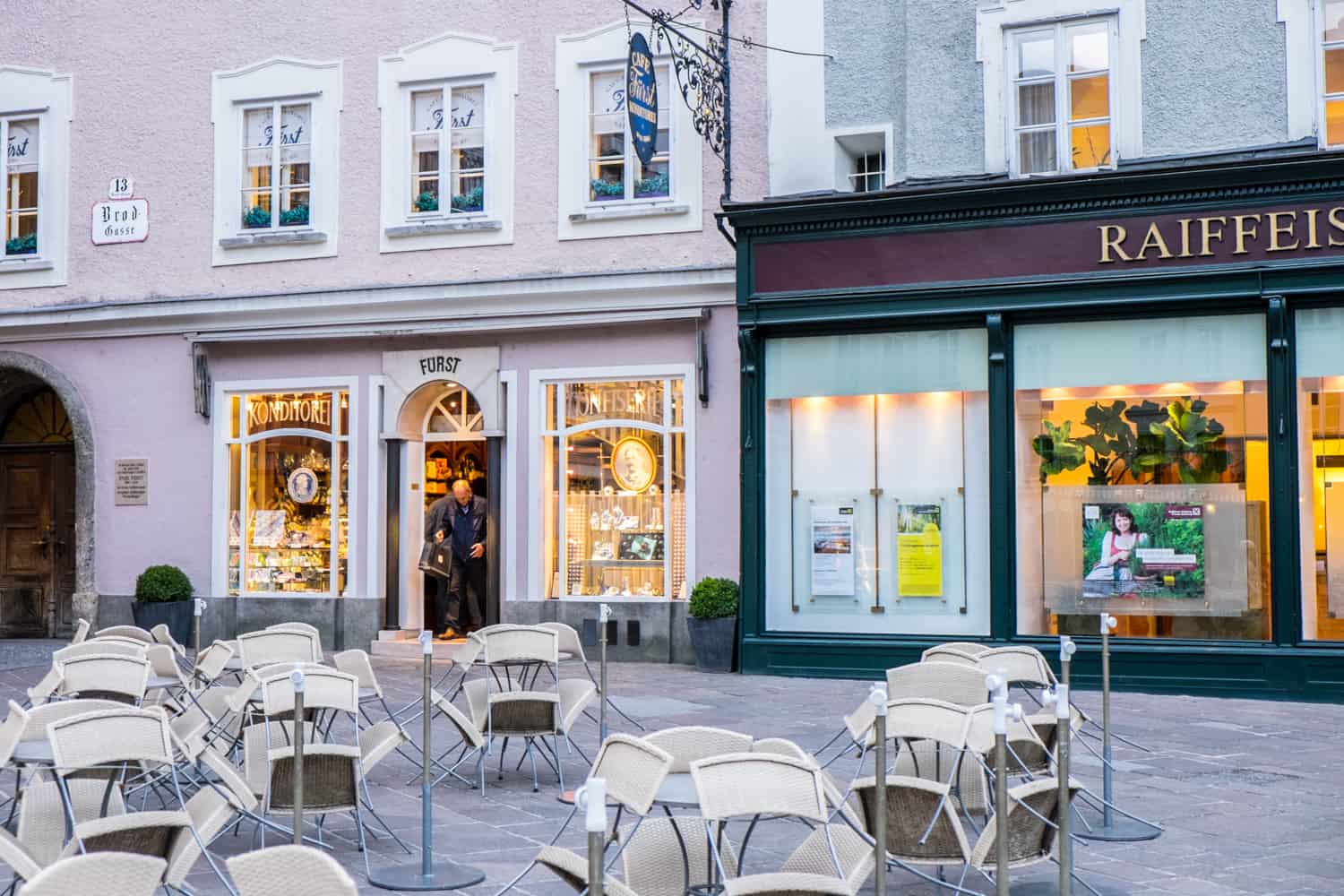
The Fürst chocolate shop – home to the original Mozartkugel.
Travel to the Origins of the Silent Night Song in Salzburg
Winter in Salzburg is not just one of the most romantic places for all things advent and Christmas related; it is also where the story of Silent Night began. The most famous of all Christmas Carols, Salzburg is pivotal to the beginnings of the song with seven locations related to it. Joseph Mohr, who wrote the Silent Night songtext, was born in Salzburg and lived at Steingasse 31. In wider SalzburgerLand, around 30 minutes from the city, you can visit Arnsdorf village where school teacher Franz Xaver Gruber first composed silent Night before moving on to the neighbouring village of Oberndorf where you’ll find the Silent Night Chapel.
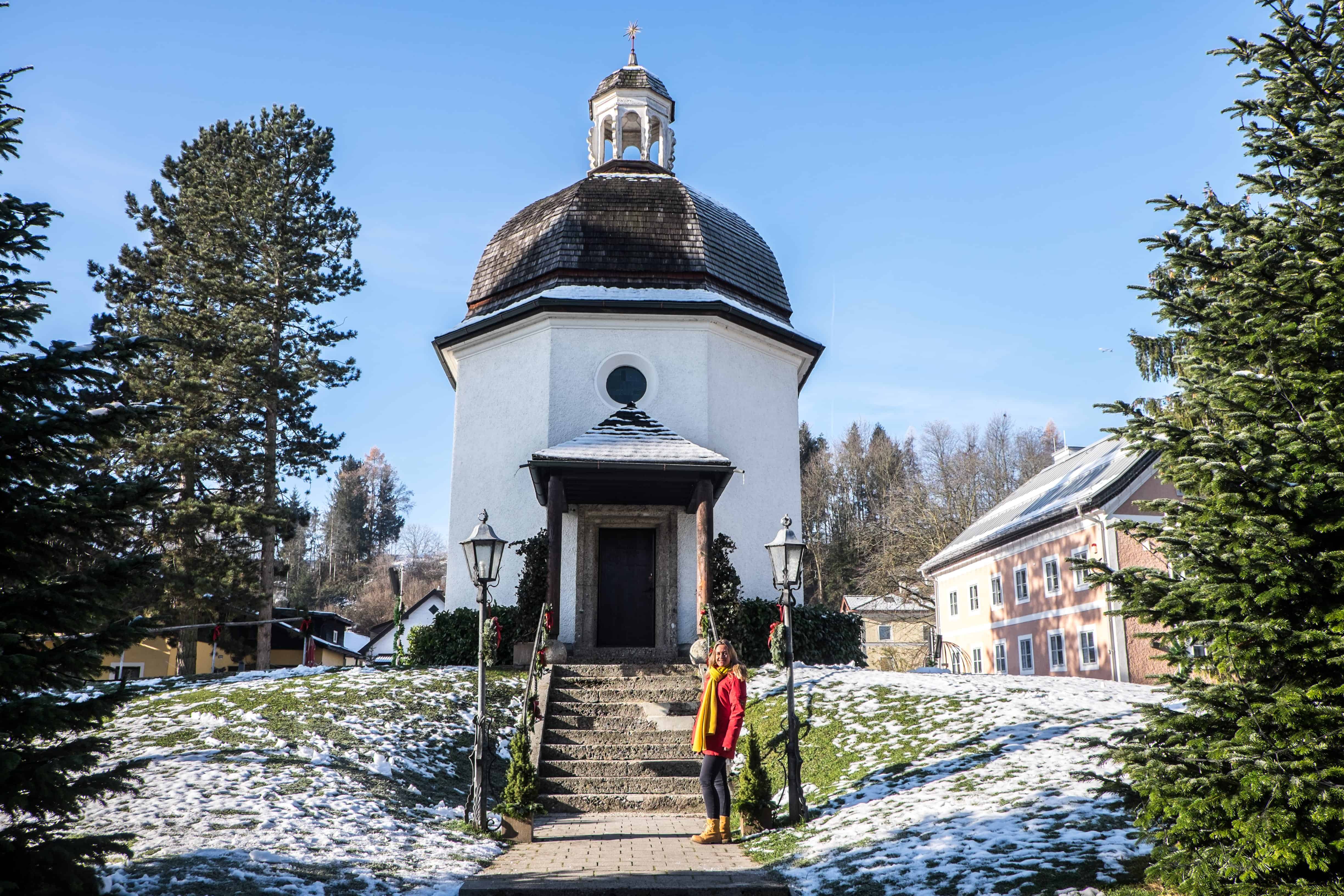
Things to Know About Salzburg, Austria:
Honour the legends of sound when you get to Salzburg and take yourself on the musical journeys it is worthy of, yet know there are more stories. Stories in its architecture, art, old alleyways and trendy neighbourhoods, giving this city more reasons for a visit.
How to Get to Salzburg
Salzburg has an airport, Flughafen Salzburg, with connections to major European cities and beyond. Travel to Salzburg is also easily accessible from anywhere in Austria, primarily via the other major city hubs. Salzburg is a 2.5-hour train ride from Vienna, 2 hours from Innsbruck and 4 hours from Graz, easily accessible via the ÖBB network.
Getting The Salzburg Card
The Salzburg Card gives you access to all museums, transport and discounts in individual stores and other outlets. It’s especially useful if you want to visit the Museum of Modern Art just for the view while using it for other advantages. A 24-hour card costs €24, 48-hour €32 and a 72-hour card is €37. There are also Salzburg hotel and card packages from €119.
Day Trips from Salzburg
Salzburg attractions are not just limited to the centre of the city. From salt mines to mountain lakes, city walking tours to a broader exploration of the state of SalzburgerLand, there are lots of Salzburg sightseeing options to see the wider city and beyond if you are staying for a few days.
One of my recommendations is St. Johann im Pongau in Salzburg, home to the deepest gorge, the hiking point to one of Austria’s best mountain viewpoints, and next to the biggest ice cave in the world.
How Can I Book the Sound of Music Tour in Salzburg?
Sound of Music fans should take the Panorama Tours bus in Salzburg all around the key film locations and out into the surrounding lake areas. The musical is also shown at the Salzburg Marionette Theatre and at the Salzburg State Theatre (check if it’s a live sing-along!).
Salzburg Hotels and Where to Stay
Hotels in Salzburg are plentiful, which options to suit all budgets.
- A suggested historical city centre Salzburg hotel is the 3* Bergland Hotel for the budget end and the real Villa Trapp for mid-budget.
- I recently stayed at the Stein Hotel – an old legendary city hotel, now renovated in the new art design. Located right on the banks of the Salzach River, its rooftop bar and restaurant provides a panoramic view of Salzburg.
- For those looking to sleep in a palace in Salzburg, stay in the Schloss Leopoldskron for ultimate luxury and a magnificent backdrop of mountains,
- If you want to stay in a former fortification on the Kapuzinerberg in the centre of the city, check out the availability of the restored 1629 castle, Franziskischlössl. Since 2017 guests can stay in the renovated former private residences and two suites with an elevated view of Salzburg’s famous mint green rooftops.
By: www.bordersofadventure.com
